On his 1909 trip in the US, Freud had this to say about the country: America is a mistake, a giant mistake. Trump and Biden, two old fools competing to fool more fools in the game of liberal/electoral democracy, are living proof of Freud’s observation. Indeed, “In America, anyone can become president. That's the problem.”
If you grew up in the Mid-west; Pennsylvania, West Virginia, New York and Ohio, you know about “deer flies”. These nasty pests are delta winged biological hunter-biters and their bite is painful
Lipoptena cervi, the deer ked or deer fly, is a species of biting fly in the family of louse flies, Hippoboscidae. These flies are commonly encountered in temperate areas of Europe, Siberia, and northern China. They have been introduced to North America.[12] They are parasites of elk, deer, and other deer family members, burrowing through the fur and sucking the blood of the host animals. Adults are only 5–7 mm (0.20–0.28 in) in length and brownish in colour. Their bodies are flat and elastic, making their removal difficult. L. cervi is a poor flier and can only fly for short distances. Once the insect reaches its target, it sheds its wings and starts burrowing through the fur.
They have a radar lock on that is terrible. Once they are on your radar you have to get behind glass or a mesh screen and watch while the bang, bang, and bag against that barrier trying to get to you.
Ah, you don’t wanna be bit. I’ll tell you what. You will end up with a red welt the size of a soda bottle cap. Yikes!
Deer fly bites can be painful due to their cutting and lapping method of feeding. The bite often results in visible bleeding wounds and general first aid-type skin creams may help to relieve the pain from bites. In rare instances, there may be allergic reactions involving hives and wheezing.
One took a dive bomb into my hair when I was at a guitar lesson around 11 years old. Wholly shit, It was painful and my dad took two hours getting dead deer fly debris out of my hair.
Holy smokes!
The Terrible Deer Fly
– Plus –
An Easy Control Method
Oh, the dredded deer fly! If you have been attacked by deer flies, you know they need no introduction. They are horrible pests. These flies show no compassion on the unsuspecting person who crosses their path. A few flies can quickly become hundreds the longer you stay in the area. They are very fast and will attack mercilessly quickly ruining your fishing trip or a family outing. (Photo Courtesy of Bugguide.net) It is largely believed there is no effective means of controlling these flies. However, one researcher has said to have found a simple way to keep them at bay. It is something the kayak fisherman can try and on my next trip to the Louisiana swamps I plan on employing this technique. I will explain it in detail later in the article. What is a Deer Fly, You Ask?? Deer Flies are true biting flies and the bites really hurt. Only the female bites. Females have small dagger like blades within their mouth parts that slice the skin to draw blood. She then fills up on a blood meal. They are very aggressive. The flies breed and live in swamp and marsh locations. They also live in forests close to grassy clearing or open areas. They can be found in most states. My Personal Experiences with These Flies One of my favorite places in Louisiana is in the Sabine River Basin. It is 1000's of acres of marsh and swamp that is part of the National Wildlife Refuge. The brackish waters are loaded with redfish, sea trout and alligators. However, many parts are loaded with deer flies. I spoke to the kayak fisherman in the photo who had just paddled through a swarm of deer flies - the same swarm that actually drove me away. He stated he had been bitten, but didn't seem to be too alarmed by it. I suppose there is not much you can do in a kayak surrounded by alligators except to keep paddling. Some say it is possible to get used to deer flies, but I don't imagine it to be easy. Here is What I Have Learned About Them Here is what I have learned about deer flies. First, they tend to reside in heavy congregations, but will not fly far to pursue a meal. Instead, they will wait until someone walks within a 100 or 200 ft of where they are waiting - then they swarm around you. They pick up on exhaled carbon dioxide and move in quickly to the source. Deer flies love to bite around the head, arms, hands and upper body. To get away from them, all it usually takes is to move away from that 100 to 200 ft range they originated from and they will break off the attack. This is important to know. Only a few will follow for an extra 75 to 100 feet outside of that range. All I had to do to get away from them is to turn around and walk 100 ft or so and they were gone. Walk back toward them and they will swarm again. Hopefully your favorite places do not have infestation so close together. In those cases the only way to get away from them is to leave the area. Some claim they will not fly into houses or cars, but that is not entirely correct. I am not sure about houses, but I have certainly killed a few that have flown into my car while I was stopped to photograph wildlife. Methods used to stop mosquitoes usually will not work on deer flies. Some suggest using Deet, the strongest formula available, but is primarily because they know of nothing else to suggest. A Truly Interesting Cure to Your Deer Fly Problem The following method was discovered by a University of Florida researcher: Take a bright blue container - a small can, jug, metal coffee can, flower pot, or anything that can be mounted on a pole. I imagine you can paint it that color, but it has to be bright blue. I haven't seen a picture of the exact color used, so saying it needs to be bright blue or bright royal blue is all I know. The blue attracts the flies. I read where a person had a bright blue car and every summer his car was covered with deer flies. He never knew why until someone told him it was the color. The article said he sold his car to end the problem. Next, cover the bright blue container with a sticky material, such as "Tanglefoot". Be sure it is clear Tanglefoot and not the dark colored one. Tanglefoot is a super sticky brush-on outdoor coating designed for this type of thing. The deer flies get stuck in the sticky goo and die. The bright blue color is such a powerful attractant that people nearby are not even bitten. Since there is only a finite number of deer flies in one location, you can temporarily reduce the deer fly population to the point they are no longer a problem. There have been several deer fly tests by people from around the country using this method and they all say it works great. I haven't personally tested it and am only going off what others say, Where I live now there are no deer flies. However, when I am back in Louisiana I will test it and give you my personal opinion. I am hoping the reports are right and it is an effective method of controlling the deer fly. If you are kayaking in thick deer fly territory be sure to bring your pole mounted blue jug coated with tanglefoot. Put the pole in a rod holder or somewhere on the kayak so it extends several feet above you. This is exactly what I plan to do on my next fishing trip to the swamps. In the link I have provided, you can also read about "trolling for flies" that has led to a decrease in fly populations. it's worth a try. Be sure to let me know how it works. I would love to hear about it. Visitor Addition: This comes from Parnell Ruiz. Thanks Parnell! "Just wanted to add to your deer fly article. Blue is definitely the color. I keep blue plastic helmets and coat them in "tangle foot" but don't coat helmet brim. While walking in the forest on my property in WI, I don't get one bite. They do attack from behind and quickly fill the back of helmet, then I just put helmet on backwards till full. Use acetone to clean helmet and repeat. Working on some type of blue apparel for my dogs. Thanks for site."
Today…
Bolivia coup failure
Why do some people cover their laptop cameras with tape? Is it just paranoia?
I once took a cyber security course in which one of the instructors hacked into six or seven laptop cameras in the class before the lunch break on the first day. The computers in question were brought by the students, not supplied by the training facility. By the second day, every student in that class had tape over their laptop cameras.
I’ve seen how vulnerable those things are. I will never again leave my laptop camera uncovered unless I’m actually using it.
Edit:
Of all the answers I’ve written, I never expected this one to take off. Over 13,000 upvotes and still climbing. Wow!
I’m seeing a lot of repeated questions in the comments, so I’ll try to answer the most common ones:
- I won’t provide the name of the course or the company that taught it. Frankly, we weren’t particularly impressed with the overall content, the professionalism of the instructors, or the value for the investment. The one interesting takeaway from the course was that laptop cameras are vulnerable to hacking.
- As I recall, the exploit in question used a malicious applet to take advantage of an unpatched vulnerability in Java.
- Some laptop cameras have hardwired lights that can’t be turned off by software. But some cameras have a software toggle that can turn off the light while the camera is active. Depending on your particular machine, the absence of a light is no guarantee that your camera has not been activated.
- A five second Google search will turn up numerous criminal cases that involve webcam/laptop camera hacking. In 2014, Jared James Abrahams was sentenced to 18 months in prison for sneaking nude photos and videos of several young women including Miss Teen USA Cassidy Wolf. This is not, by any means, an isolated case.
- I have no illusions that hackers are slavering to catch sight of my naked body. But the wall behind my desk has a dry erase board and bulletin board areas that are usually covered in notes, drawings, diagrams, schedules, and schematics. Nothing classified, but often information that requires protection.
- The machines that I saw hacked were all running Windows, but – according to the Mac Security Blog, Apple computers are also vulnerable to camera hacking.
- Yes, your microphone is vulnerable too. Depending on the machine, you can block some internal microphones using a dummy plug in the mic jack. For some laptops, physically disconnecting the microphone from the motherboard isn’t too difficult. I personally opt for the dummy plug. It’s not 100% certain, but few defensive measures are absolute.
I’m under no impression that covering your camera and using a dummy plug for your microphone will provide perfect security. Frankly, there’s no such thing. In my opinion, these are just a couple of simple and inexpensive precautions that narrow your window of vulnerability. Nothing more.
And I’m done responding to comments on this answer. There are literally hundreds of articles and videos on the topic from people who know more about it than I do.
MOVING TO USA🇺🇸 | WHAT I WISH I KNEW BEFORE MOVING (as a Ugandan🇺🇬) GreenCard, Culture & More
What screams “I’m upper class”?
I’ve been around quite a few wealthy people, but only a few of them have been what I consider upper class.
To me, someone who is upper class treats everyone with respect. They don’t flaunt their wealth, and they don’t ever try to prove they’ve got money.
I went to a very expensive prep school in New York, on scholarship. Many of the girls looked down their noses at me because my family was barely middle class, and I didn’t have the money to shop at Bloomingdales like they did. But you know who were my friends? The girls who had the same last names as buildings on 5th Avenue and famous restaurants. They didn’t care that I was there on scholarship because they weren’t competitive, like the girls who were continually trying to prove how wealthy their families were. Instead, they welcomed me into their homes and took me to dizzying social events. Class all the way.
When I was a senior, I was told that my scholarship had been paid for by the wealthy founders of Reader’s Digest, and the only thing they asked in return was that I write them a letter telling them about my high school experience and what my future plans were. I got the most charming handwritten letter back from DeWitt Wallace thanking me for writing! True class.
Later, in college, I worked a part-time job at a retail store. One night the very-impressed-by-himself store manager asked me to stay late and I told him I couldn’t because I needed to catch the last bus home. He said he would give me a ride if I would stay. And so I did.
Of course, when it was time to leave, the manager was long gone and I was stranded. It just so happened that the son of the founder of the major corporation that owned the store was interning there that month as preparation for going into the corporate office. He saw what had happened and gave me a ride home in his Mercedes Benz. He could not have been nicer or a better conversationalist on our ride to my home.
So, in short, I believe that people who are truly upper class are kind, considerate, and take their wealth out of the equation when dealing with other people. It’s simply a part of them, but nothing that needs to be mentioned, flaunted, or bragged about.
Which country has the better governance, China or India? Why?
This question would not be asked if you had been to both of those countries.
I have and you cannot even put them in the same league.
China is a global power, a middle-income country, with a literacy rate in the 90s and the largest manufacturing base in the world. China has a 100-year economic plan, which gives the whole country its priorities and the whole nation follows. China’s urban poverty rate is 1%

Shanghai, China
India is a low-income country, with the highest population of malnutrition children in the world. It is also the biggest recipient of aid, in the world, just for this reason. India’s governance is fragmented, divided up into states that impede big business. The politicians are highly corrupt. Politics is full of communal venom. There are about a dozen active separatist movements. Their wealthiest city, Bombay, has half of its population defecating in the open.

Mumbai, India
China is not only wealthier, more educated, and better planned, but it is also more peaceful, has lower crime rate and is safer. If you have walked the streets of Delhi and Bejing at night, the difference is absolutely clear.
As I have said before, China’s government is made up of extremely intelligent technocrats that have built their political career through decades of work for the CCP. The whole world may scoff at a one-party system, but there is plenty of politics within the party as well. You have to prove yourself at a lower level in various different capacities before being considered for the top job.
That is the reason why merit gets you to the top rather than family dynasties, nationalist or religious fervour.
NEW TREND!! Why Companies Have Started Firing Women (Compilation)
What is a stand you took during your wedding planning that you will never apologize for?
We had shared a home, a life, and three pets for several years, and we each had two teenaged kids. Mine lived with us, and his came to stay regularly. We all got along great.
We decided to get married, but wanted something fun and informal. His mother and my sister became absolutely intolerable, trying to control every detail, to the point that I told my partner I was ready to forget about getting married.
He said, “Is it the wedding you don’t want, or the marriage?”
I told him it was the wedding.
So he suggested we elope. We applied for a marriage license and booked a justice of the peace at the planned destination in Vermont. We booked rooms and the library/parlour at the country inn there. We had been to Vermont before, but not to this particular facility. But we liked what we saw from the online photos.
We packed up the teenagers and a handful of other people we’re close to, and got married at the country inn, which was charming. The staff was friendly and helpful, the ambience was delightful, and the justice of the peace who married us made the ceremony personal and special. Everything about that weekend was perfect: relaxed, fun, simple.
Once that was a done deal, our friend hosted a blessing of marriage and buffet dinner at her place several weeks later. My sister and his mother, who had been unable to travel for the Vermont wedding, were guests of honour at the party. They grumbled a bit about missing the “real wedding,” but they were the architects of that.
I’ve never regretted our “elopement,” even if we did have a bunch of teenagers along!
4 Things I Wish I Knew BEFORE Moving to the USA
The Moon
Getting to the moon was the hard part. But the US had already sent space probes into deep space so they were familiar with transfer orbits.
And getting the lunar module on the moon only requires the computing power of an Atari game console. Which they had.
The Apollo program used the first computer module. The hard part was making sure the radar altimeter worked properly.
The technology was crude by today’s standards but they worked. They also had gyroscopes to maintain stability. Sure they were huge by today’s standard but they worked.
Already proven on fighters and satellites.
If you go back 10 years then it would have increased the danger by at least 10 times or more. Because they really needed the computer. Without one, it’s eyeball landing. And they even practiced that just in case.
You can get a hold of the Apollo program documents. They literally documented everything. Including vibration testing on each individual bolt and screw. They knew what percent would fail and worked to make that close to zero.
What is concerning is that the Artemis program is ignoring all that. And they’re going to try and land a gigantic ship on the moon. The thing is 160 feet long.
The US and Japan tried landing on the moon with long tall objects and both fell over. The lunar soil is dusty and can easily cover a rock. if one leg lands on that, the SpaceX lander will fall over.
That is why all lunar modules that have successfully landed all use a wide base with a squat design. Even if you land on a rock on one leg, it will still be upright.
And they used hypergolic fuel. No need for ignition. Once the fuel mixed, it ignited. SpaceX is going to use normal rocket engines. And needs to land at least 4 more robot SpaceX cargo filled with fuel to refuel the lander to get off the moon.
A lot of untested tech that they are going to test on the moon and in orbit. It’s going to be interesting to see what happens. They’re doing the exact opposite of the Apollo program. Apollo tested everything to death. SpaceX, no need. They test while doing it.
Apocalypto and the Warning Signs of Societal Collapse (Film Analysis)
Who are some criminals you have the most respect for?

Lyle and Erik Menendez.
These two brothers shot and killed both of their parents on August 20, 1989. Lyle was 21 years old and Erik was 18. They had killed entertainment executive José and Kitty, (his wife) in their home in Beverly Hills.
So far, they seem pretty deserving of a lifetime in prison, correct? But wait until you hear why they did this; they were scared shitless for their lives. Afraid of their own parents. Why?
Here’s a little bit of background on the two rich white kids:
Stuart Hart is an educational child psychologist and a professor emeritus at Indiana University, where he taught for 30 years. He also served as an expert defense witness in the trials of brothers Lyle and Erik Menendez, for the 1989 shotgun murders of their parents Jose and Kitty Menendez at their Beverly Hills home. At the time, Lyle was 21 and Erik was 18.
In that case, the prosecution argued that the brothers had been motivated by greed, pointing to the lavish shopping they did after the killings. The defense said the prime motive was Sexual Abuse the young men suffered at their father’s hands.
After he began working on the case, Hart came to agree with the defense—when he took the stand, he argued strongly for the child-abuse defense. In 1996 Lyle and Erik Menendez were each sentenced to life in prison without the possibility of parole, but even today Hart views the homicides as a reaction to gross parental misconduct, rather than the work of cold, calculating killers.
TL;DR, these two dudes had their father sexually abuse and molest them all throughout their childhood, Lyle having gotten off the hook when he was about 13 years old but Erik continuously getting raped and sexually harassed by his own fucking father until he was 18.
Bullshit? I think not.
The consistency of the reporting of it, and the details of the reporting of it. And the consistency of those details. And the fact that this is humiliating.
You had an adolescent girl cousin who was saying that Lyle confided—not in terms of clearly stating what he was experiencing—but telling her he wanted to stay in her room.
There was another cousin who Erik reported to. And that would’ve been quite a risk for them: As young children—Lyle was about eight or so—anything that got back to his father was going to mean serious problems. So much reporting of sexual abuse is a case of somebody describing what happened to them with nobody observing them.
They had the proof, they had the witnesses, for these claims. At least, as much proof and evidence a person can get with this type of stuff.

Just for an idea, look at the picture above. Why the ever-loving fuck is José holding Lyle by his crotch like that? Why not his stomach or some other body part?
The murder happened after Lyle had found out that Erik was still getting sexually abused by his father at 18. The events as told by Erik in a news report in the following Quotations:
“I remember it was Tuesday and I was coming in the front door of the house and mom and Lyle were coming out of the study and mom was screaming,” Erik explains, speaking from a phone inside the walls of Donovan Correctional Facility.
“They were in an argument and Lyle was saying that he needed it and it was important and mom in a rage said, ‘You don’t ned your effing hair piece!’ and she reached up and she ripped his hair off his head. I remember just being stunned by what happened.”
In old court testimony, Lyle explained that the alleged incident left him “completely embarrassed.” “[Erik] didn’t know I had a hair piece,” he said. “My brother and I, there are things we don’t talk about and that was one of them.”
“I told him not to worry about it, that he was my brother, that I loved him, basically saying I don’t judge you,” Erik continues, before detailing how the conversation then changed to another, darker topic.
“I asked him, ‘Do you remember when I was a kid, you asked me if anything was happening between me and dad?’ I said, ‘Lyle, it’s still happening,'” says Erik.
“He was like, ‘What do you mean?’ ‘Still happening, just sexual things.’ He got suddenly really upset. Saying how could I let that happen, did I enjoy it, why didn’t I tell anyone, why didn’t I stop it. I was crying and I started having a small panic attack.”
Erik says his brother then asked if their mother knew about the abuse. “I said ‘no,’ [but] he said, ‘No, I think she does. I think mom knows.”
Lyle, in an effort to protect his younger brother approached and threatened José saying that, “You’re going to have to let him go; otherwise we’re going to tell.”
Their father shot back saying that they’d never dare and deeply regret it if they did. This got them paranoid that he was going to kill them in fear of ruining his perfect reputation, leading to them planning on the murder.
Time then comes and they do go through with the murder, killing both their parents. Personally, I think Kitty also deserved to die here. Along with fully knowing what was going on between them and their father and not doing anything to help, she also participated in her own form of sexual abuse.
Until he was 13, his mother would wash his body “everywhere,” he said. She also would invite him into bed with her and he would touch her “everywhere,” he testified.
“I took it to be love,” Lyle Menendez said, adding, “She was enjoying it.” But he was not enjoying it, he said, so he stopped the activities, which enraged her.
Throughout his adolescence, he said, she “harassed” him with increasingly bizarre sexual conduct.
Ew. How fucking disgusting. These people are sick, their kids didn’t ask for this. Killing their parents seemed like the only way out for them and honestly, I perfectly understand why.
There was a lot of evidence for them here. With witnesses testifying the boy’s claims and maids having said to have found child pornography magazines in José’s office to other people claiming to have been sexually harassed by him as well.
Though not many people were willing to risk ruining their reputations by testifying it in court, ultimately resulting in a lack of presented evidence as opposed to available evidence.
The first two trials they had were out of sync. The first jury declaring them innocent but faced backlash from the public who wanted them locked up for good. It was declared a mistrial and they restarted the entire case in front of the second jury, unfairly forbidding the mentions and evidence of sexual abuse as reasons to support their claims for self-defense.
Some people from the second jury later stated that if they had been told about the sexual abuse and the family history, they would have never placed them as guilty and resulted in giving them life without parole.
It’s pretty funny that the judge had to take an unfair route like that to actually win the case against the two. This also happened around the same time of the OJ Simpson case so it didn’t help either.
I sometimes wonder how different things would be right now if the Menendez brothers were the Menendez sisters instead.
Casserole Rye Bread

Ingredients
- 1 cup milk
- 3 tablespoons granulated sugar
- 1 tablespoon salt
- 1 1/2 tablespoons butter
- 1 cup warm water
- 2 envelopes dry yeast
- 3 cups all-purpose flour
- 1 1/2 cups rye flour
Instructions
- Heat milk, sugar, salt and butter together and cool to lukewarm.
- Measure warm water and dry yeast into a bowl. Stir until dissolved.
- Stir in lukewarm milk mixture and flours. Beat until well blended (this is the secret to this bread).
- Cover and let rise free from draft about 50 minutes or until double in bulk.
- Stir batter down and beat vigorously about 30 seconds.
- Turn into a well-greased 1 1/2 quart round bottom casserole. Brush carefully with milk and bake uncovered for about 1 hour at 375 degrees F.
- Butter top well after baking.
Men Are ‘Raw Dogging’ On Airplanes
Something About Nothing
Submitted into Contest #8 in response to: Write a story about an adventure in space. … view prompt
Yvonne S
So Set just sat there and it got darker and darker and darker. Set was scared, he couldn’t see SOMETHING or NOTHING. He just sat there in triple darkness.
Part IV
Then he looked out in the distance and it started getting lighter and lighter and he saw something coming toward him. Oh no! Oh no! It got closer and closer, and closer and closer and it was – Rise and Dawn.
NOTHING’S Son, Set regained his composure, cleared his throat – “uhrum” and said, “Where were you two yesterday?”
Dawn said, “Set, on our way here we decided to forgive and forget. Because in forgiveness there is healing, and we like the feeling, so we are going to be on our merry way.”
Set watched them go out of sight. And he said, “Well, I’m not forgiving and I’m not forgetting. I’m sitting right here in the West and this is where I’ll be sitting from now on. I’ll get even with SOMETHING all by myself.”
And ever since then, NOTHING’S son, Set has been setting in the West.
And that’s the truth about SOMETHING and about NOTHING.
And the moral of this story is: If you are going to do something about something, do it before the sun sets or you will get caught sitting on your ass-ets in the dark.
What is the most absurd thing you’ve been charged for on a bill?
I can think of two examples, both of which have soured me on them.
First was AT&T. I was living in Charlotte and had just gotten laid off. I was scrambling around town trying to find employment so I didn’t have to collect unemployment. The good part was I did find a contracting job that afternoon and would soon be hired, though the job didn’t pay much and lasted only 2 months.
I got home from an interview that afternoon and got my mail. First was a warning from Bellsouth (another company I despise) that I had an unusually high phone bill that month. I was concerned and then found my phone bill. $180!!!!!
I looked at the itemized bill and found the culprit. A third-party call from Valdosta, GA, to where I can only surmise was the USVI was on my bill. I thought, must be a mistake. I called Bellsouth and they referred me to AT&T, my long-distance provider.
The woman I talked to refused to admit the mistake. She actually doubled down, saying it happened so I must have agreed to it. I looked at the date. 2/13/1999. Not only was I not even at home for most of that day, but I was even further away from Valdosta than that, having been in that part of Georgia last in 1993. A supervisor said the same thing and refused to listen to me. I wound up having to eat the bill or risk going to collections.
When people ask me why I won’t get AT&T U-Verse, I tell them that story.
Second was an item the restaurant no longer carried, and it made an already unpleasant dining experience even worse.
My wife and I were downtown at an event, which made us take a late dinner. 7pm is late for us, but hardly an unreasonable time to eat. We decided to treat ourselves to a local restaurant in the area, one we had been to before without incident.
They gave us our menus. I ordered the short ribs and a salad. They brough out the salad pretty quickly. While I was eating, they came out (a half hour after I ordered) and said they no longer had short ribs, that the menu hadn’t been updated.
I got the menu and ordered something else. Okay, things happen, right?
Well in the meantime, a large party sat down and was promptly served. That would have been fine, except we were still waiting for our food. I talked to a manager who just brushed my complaints off. I almost walked out with my wife at that point, because it was approaching a 2 hour wait time (yes, 9PM!!!) after we had ordered, and the wait staff was ignoring us in favor of that large party.
The food finally came. It was not good, but I didn’t dare order something else so I ate it and waited for the bill. It was almost double what I was expecting to pay.. I hadn’t ordered anything that much more expensive so what was going on?
The itemized bill made it very clear. They had charged me for short ribs. You know, the thing they said they didn’t have any more. They took them off but no other recourse except a small dessert.
We have not been back, but my wife’s local woman’s club catered from them, and she told me the food was horrible
Vintage art







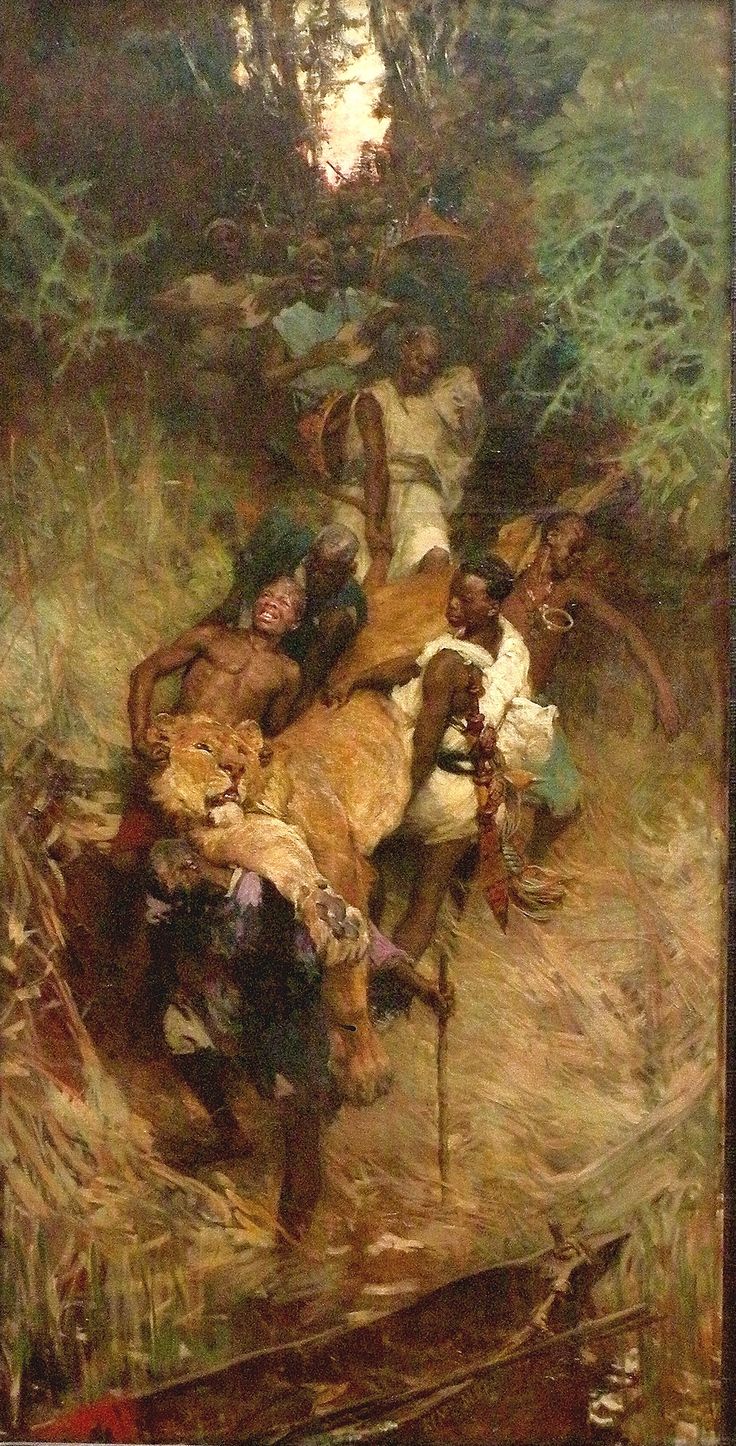

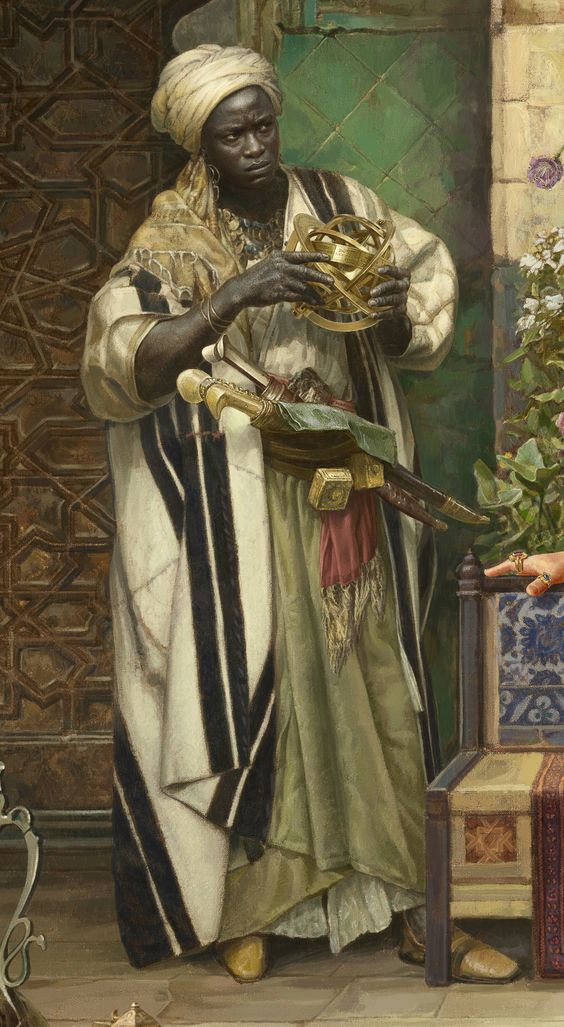
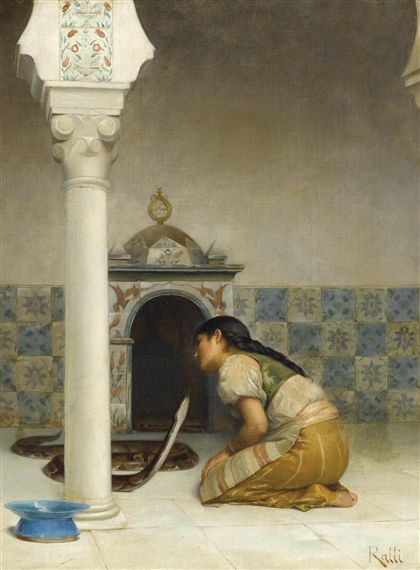



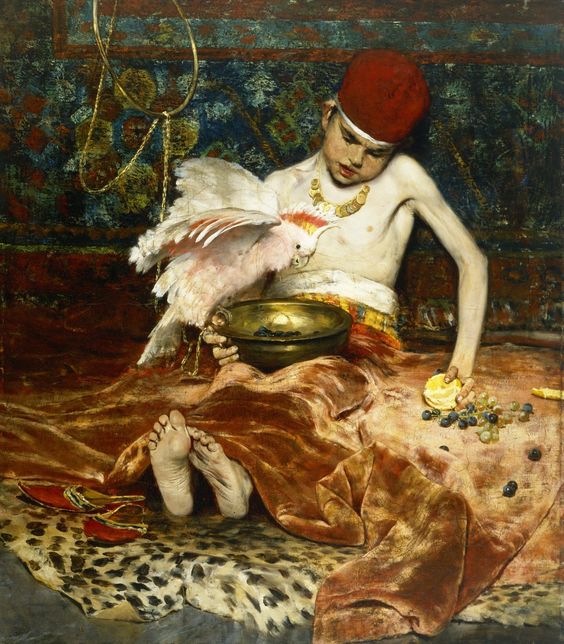

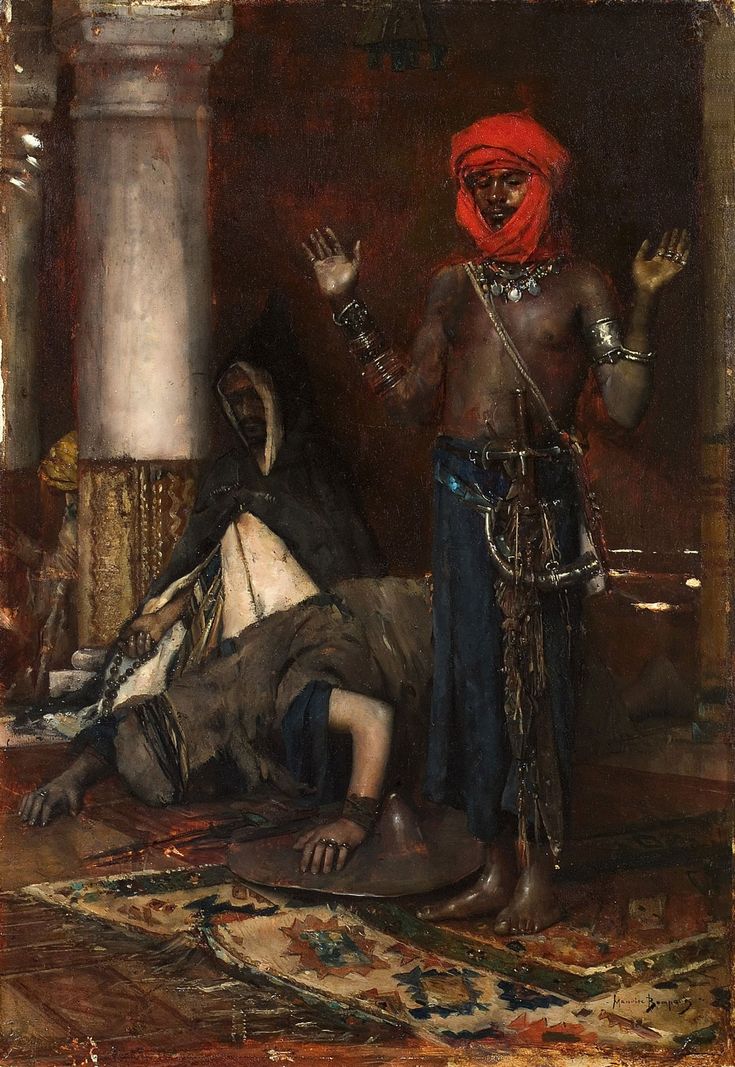


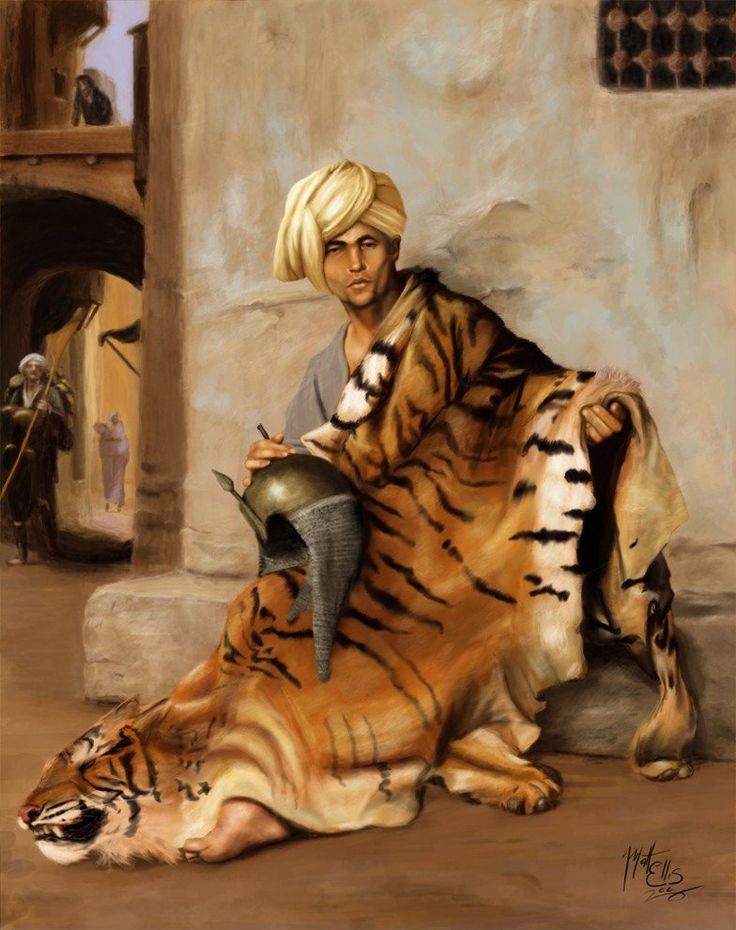

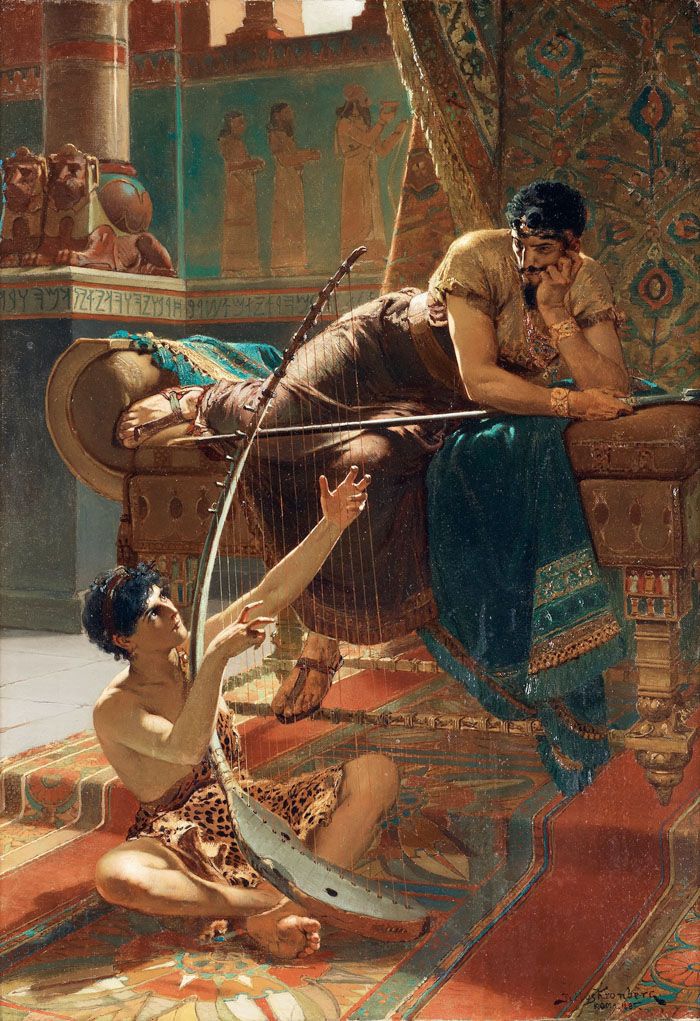



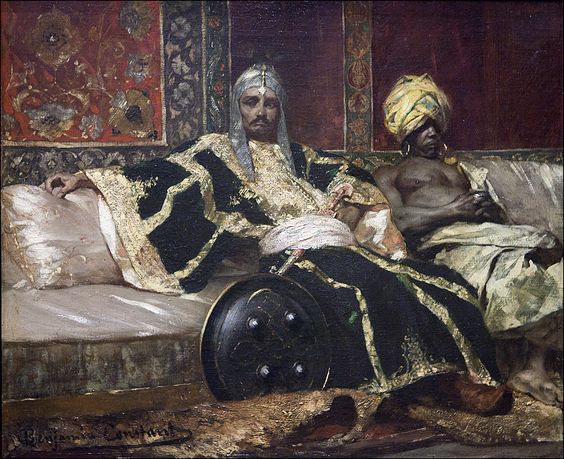

What’s the most unforgivable statement made by your father-in-law?
I was undergoing IVF treatment as my husband has low sperm count. I, on the other hand was super – fertile and we had high hopes from the fertility treatment.
Soon we were called for transfer of fertilized eggs to my uterus. During this time, my in – laws came to visit us. We had not told them yet about the IVF, but since next day we had to visit the hospital, we confided to my mom – in – law. She was very happy and supportive and insisted that she will also come to the hospital. We both were very much okay with that. She is very helpful person and loves all her sons.
When my Dad – in – law came to know, he also started showing interest in coming to the hospital. He had lot of health issues – diabetic, heart ailment etc. I tried to tell him it’s uncomfortable for him as we don’t know how much time it will take. The hospital was quite far from our place and there were no decent restaurants in that area. Since we had already been there a few times, we knew this well. But, being an obnoxious person, he totally used his ‘dad’ card and got ready the next morning to come with us.
My husband was upset, but there was no time to argue, also he never listend to any reasonable request in his whole life. So we all went. As predicted it became quite late by the time the procedure was done. Even though we were all tired and hungry, the mood was happy as we – me, husband and his mom, were happy and hopeful after the procedure. Mom assured me that she will stay for at least 2–3 weeks as I was prescribed bedrest ( this is almost 16 years ago).
Meanwhile Father in law was cranky with hunger and also was not interested in staying so long, so he started getting a foul mood. He started grilling my husband about the IVF procedure – why it’s being done – it was very embarrassing for him. That too right in the restaurant. Then he asked, “How much did it cost ? “ My husband said ,” Rs.60,000/- “ Father -in -laws eyebrows shot up and he said , “ That’s too much ! “ Then he looked at me and said ,” I got mine for free !”
Oh my god, we were so angry to hear that ! I will never forget his face when he said those words.
But my mom -in – law had the perfect retort. She said ,” And that’s why you don’t respect them !”
Edit – Thanks for the support. Some of you have asked about the result of my IVF treatment – it was very much positive. I have 15 yr old twins – both are boys and they are fraternal twins.
Also some discussion was there about the treatment method that we selected.
I had already done two cycles of IUI. It was unsuccessful as my husband has asthenospermia. It means that sperms have reduce motility. So even though sperm count is good, the sperms cannot penetrate the egg.
The treatment I actually underwent was ICSI – a selective type of IVF, where a sperm is actually injected into an egg to bring about fertilisation.
The cost factor – it was highly reduced for me because I am a medical professional myself. The doctor voluntarily reduced the fees and took only lab and OT charges from us. My bro in law also had same issues and they had to undergo 3 cycles of ICSI and ended up spending almost Rs.2.5 lakh, 12 years ago.
John has something to say

What was the day that changed your life in a way you would never have expected when you woke up that morning?
A little over a year ago, on June 1, 2020, I woke up startled to hear my door pounding loudly. My girlfriend of just a few months was at the door and she looked like she had just rolled out of bed and run over to come get me (she had and she wasn’t wearing her shoes yet either). She told me that my mom and sisters had tried to get a hold of me but couldn’t because my phone was on silent, so they called her instead and that I needed to get dressed ASAP so we could go to the hospital. My father who had had a lot of health issues throughout his life but had always fought through it, had suddenly coded and the doctors managed to barely revive him long enough to put him into a medically induced coma.
We spent the rest of the day at the hospital saying our goodbyes and contacting our extended family members. My grandfather was in a care home at the time and my grandmother was also in the hospital being treated for a fall at home (they died 2 months apart later in the year) and my aunt, his only sibling, didn’t want to bother to drive down to Utah from Boise.
My mom got a lot of doctors opinions and he was given a lot of religious blessings that day and at the end of it all we decided to keep him alive to see if he would wake up. He was given a less than 5% chance of waking up, but he had beaten odds worse than that before and we all were sure he would pull out of it as he had in the past. My aunt ended up making the drive with one of my three cousins by the fourth day of his coma to help out because my mom was always at the hospital and since this was mid-COVID, they wouldn’t let anyone else in the room.
By the end of the week my mom had decided it wasn’t going to make sense to keep him in his coma and that we needed to turn off the machines, because he wasn’t improving in any way, and we didn’t have the income necessary to sustain it. We got extremely special permission from the hospital and were allowed to have 6 people in the room when we turned off the machines, and I would not wish that experience on anyone. I have nightmares that I won’t be able to talk about for years about that experience.
At the end of it all it took 5 more months and then my grandfather gave up the will to live and just passed away at the care home, followed 2 months later by my grandmother a week before Christmas. Currently, my family is locked in an extremely heated and horribly bitter lawsuit with my aunt over the inheritance from my grandparents estate and my family has fallen entirely apart.
My father passed away a year and 2 days ago as I’m typing this and there isn’t a day that goes by that I don’t think about him. If things had been different maybe we would still be a family and we would all still be at least talking to each other, but who knows.
Anyway, thanks for listening to my rant, sorry for bumming you out.
Salomar and the Bird
Submitted into Contest #8 in response to: Write a story about an adventure in space. … view prompt
Lenora Good
“Computer?”
“Warning! Warning! Warn….”
“Oh, shut up, will you? I know about the leak.” The computer did not shut up.
The action of her movements, the focus on what needed to be done dried her tears, but did not ease her pain. All her life she wanted to go to the stars. She saved every credit she could earn. She hired onto a freighter and gladly did whatever scut work she was assigned. Her own time she spent at the computer learning all she could about each and every job it took to run a ship, and how to pilot a ship through the void.
She applied for a job in hydraulics. No one liked hydraulics – literally, the ‘stink’ job on board. Accepted, she soon was in charge.
When she applied for communications, she was turned down. Too valuable in plumbing, they told her. Before they docked at the next port, she requested a meeting with the Captain. She told him her plan, to learn all the jobs necessary to run a freighter, showed him her transcripts from the training, and told him of her dream to own and pilot her own freighter. She also told him she would be looking for another ship when they docked, and would he please write a letter of recommendation for her.
By the time they docked, she worked split shifts between hydraulics and communications. It took 10 years to work her way through the ship and to save enough credits to venture out on her own. She was grateful her Captain had enough faith in her to help underwrite the Flaming Salomardor, and that he sent her what trade he could. He was probably her best, if not only, friend. Piloting a small freighter did not lend itself well to friendships. Let alone relationships.
With a sigh of resignation Salomar turned for one last look at what had been her home, her life’s work, her dreams. It was not easy to say a final good-bye to her freighter.
She hadn’t gone far before she realized she couldn’t hear the voice of the computer and it’s incessant warning. She was truly alone. Even the sound of her voice seemed swallowed by the eerie fog. The mountains, when visible, looked like abandoned black dragon scales stuck vertically in long dead and cold molten rock. Salomar saw no signs of life.
“I do believe, in the vids at least, this is where the monster rises from the sea to eat the maiden. Thank the gods I’m no longer a maiden.” Her attempt at humor failed to raise her spirits.
“Those mountains don’t look more than ten, maybe fifteen kilometers off, shouldn’t take too long to reach, unless I have to swim a good portion of it.” Alone, she began the long wade to the shore, humming a long forgotten nursery rhyme under her breath.
Salomar screamed. Heart pounding, knife drawn, she wheeled in a defensive crouch to face the monster attacking her back. “Oh. It’s you.” She looked into the face of the missing bird. Wading silently behind her, it pecked at her shoulder. “Well, guess we’d best see if any of your feed survived, then we need to get out of here. This water is creepy, and I smell the salt of a leaky fuel pod. Wouldn’t be nice to be here when the damn thing blows.” Salomar and the bird returned to the ship to search for the food. The computer still warned all who listened. Or didn’t listen.
The bird stood quietly and looked at the carnage of dead clutch-mates and broken eggs. Salomar could not see the mourning heart of the bird.
She found some dry seed and quickly jerry-rigged a pack from seed bags and rope to sling over the bird’s back. She took the beacon from her arm pocket and hung it around the bird’s neck. At almost three meters in height, there was a better chance of it staying dry on the bird, than in Salomar’s sleeve pocket. On their way out of the cargo area, she came across one of the silver and gold leads, meant only for the royal personages to handle, and fastened it on the jeweled harness worn by the bird. The jewels and cut metal reflected the green haze in laser sharp spears.
“Well, bird, anything as valuable as you must have a name, but damned if I know it. So I’ll just call you Bird, and you may call me Captain. Now, let’s head for those upended dragon scales that pass for mountains.
“With those bright red and purple feathers, you must be a male. It is the male isn’t it, that is the brighter colored? Perhaps I should call you Mister Bird.”
Bird stopped to look at her, first with his right eye, then with his left. Then he turned and continued walking.
“So, Mr. Bird, why does the Emperor want you? You appear too beautiful to be used as a beast of burden, even though circumstances beyond my control have unfortunately placed you in that capacity. And with the jeweled leads, you obviously aren’t meant for food. So, you must be a pet. A toy. Must be nice to be the Emperor’s toy. You’re too passive to be a guard bird. Or, maybe you were to be a present for the Empress? Ah, I bet that’s it, eh Mr. Bird?” Salomar prattled, just for the sound of a voice. On board the ship, she and Computer had carried on conversations, but here, in the shallow sea, she felt the aloneness.
The sun lowered until it seemed to balance precariously on the edge of the world. Through the ever-present mist, it appeared to rest there just a moment before tumbling into darkness.
There was no moon visible for this strange world. No stars shone through the mist. The mist glowed softly green, almost casting enough light for Salomar to see where they waded. She turned on her light; the mist threw it blindingly back at her. She turned the light off, and placed it back in the pack.
The only sound was the soft sloshing noises Salomar’s legs made cutting through the water, and her voice when she spoke. There were no jumpers from the water. No breakers to be heard crashing onto the shore. Bird made no noise at all.
The water, at its deepest had been to her waist, at its shallowest, to her knees. The water felt slimy, and began to eat her clothing. Her legs started to cramp.
Once full dark set in, Salomar noticed tiny lights darting in the water.
“Well, Mr. Bird, it appears we have company. I thought these waters were void of life, but there seems to be a great deal of life in them. I hope they don’t have a strong liking for human. Or bird. Let me know if they start to nibble on your legs. They seem to be staying away from mine.”
Bird ignored her and continued to walk. He made no effort to escape. He stayed with her; seemingly glad for the company, and the sound of a human voice. He walked next to her, matching her pace, rather than being led, or trying to lead.
Quiet, the bird focused on Salomar when she spoke, first with one eye, then with the other, as if absorbing every word, every nuance. When Salomar finished speaking, the bird would turn its head forward, and continue toward the westward mountains.
“You know, Mr. Bird, I thought you were the dumbest cargo I’d ever hauled. But I’ll be honest—you are fair company—a lousy conversationalist, but fair company. When we get off this forsaken planet, I shall personally ask His Royal Emperor Audubon the Eighth to see to it that you never lack for any of the comforts. And, by golly, if he’s willing, I just may petition him for you. Would you like that? Would you like flying about space in a proper ship hauling freight and taking time to see the sights? We’ll tour all the exotic planets. But no water planets, ok? Maybe even find you a mate. Then the three of us will see the Galaxy. How ‘bout that, Mr. Bird? Sound like fun?” Bird ignored her questions.
“Soda biscuits! I should be so lucky. With my luck, I’ll be tried for destroying His Royal Birds. I wonder who shot us, anyway. And why? And why just as we jumped? Are we getting any closer to those damn mountains? It’s hard to tell, in this slimy, foul mist.”
Salomar talked. It helped her remain awake. She put her arm about the bird, and used him for support, to relieve the cramps in her legs. Her voice slowed, then stopped. Asleep, she slid into the water and floated on her back. The bird walked, dragging her until brightness on the eastern horizon awakened her.
When she stood, what was left of her suit, floated off in shreds. She walked out of her left boot. A few steps later, her right boot stayed behind. Barefoot, she continued to wade. The pea gravel forced itself between her tender toes. The sun burned through the mist, blackened her skin. Still, the mountains seemed no closer.
“Y’know, bird. Ma was right, I’m thinking right about now. I shoulda stayed home, married some bloke, and had a passel of kids. But oh no, I had to do it myself. I had to go into space. I had to go into hock, too, but that’s not the point of this monologue. No, ‘bout now, I’m a wishin’ I’da stayed put—or at least not ventured past the freight station. I coulda worked there. That was in space, but closer to home. But, no….” Salomar spoke softly through cracked lips. There were breaths between words and many breaths between sentences.
Her sunburn blistered, cracked, oozed. She screamed with pain when she fell into the water. The seawater felt like acid on her burnt and cracked skin. Bird stood and watched, first with one eye, then with the other until she stood, and they continued their trek.
For the second night, the sun seemed to stop for a moment on the sharp edge of the mountains, as if deciding whether or not to plunge once more into darkness. For a second night, Salomar looked at the mountains, ever before her, yet never seeming nearer.
Her legs cramped. Her body burned. She stopped. Bird stopped. She slid into the water, and with a sharp intake of breath she stood, and shook herself. “Got to keep going. We’re almost there. ‘Most there.” The bird turned its attention from Salomar to the mountains, and trudged onward.
“Y’know, Mr. Bird, no one said hoppin’ freight around space would be easy, but by the gonads of St. Patrick, I surely thought it would be safer than the Navy. Those troop fight wars. About now, though, I wish I’da listened to Ma. Wonder how she is. A little late to worry ‘bout her, huh? Probably died years ago. But I wonder. She used to make the most wonderful spiced coffee in the Universe. Sure could do with a cup ‘bout now. Wonder if she ever forgave me for chasing my dream?”
Bird stopped, looked at her from each eye, and then resumed his walk.
The merciful embrace of fever clothed Salomar in the eerie glow of the mist. The mist thickened and twirled about her. She clung to the bird as dizziness swept through her. She pointed, excitement in her voice, “Mr. Bird, look—there’s Ma. There’s Ma! Ma? Did you come to save us? We have to take Bird, y’know. Yeah, we do.” The mist thinned, Ma dissolved, clarity returned to Salomar.
“Mr. Bird, we’d best get to land before long, or I won’t be worth much. I’m already hallucinating. Wonder when the rescue party will come? Hope it’s damned quick. There’s nothing in this water we can eat. I hope we can find something on the land. At least water. Ours is ‘bout gone.”
She opened the canteen, carried on bird’s back, and shared the remaining few drops. She deliberately replaced the empty canteen on the bird, “We’ll need it on land,” she explained to Bird.
Chills racked her body as they walked. “Ma,” she whined, “Ma, I’m cold. Please, Ma, bring me ‘nother blanket. I’ll be good. I’ll stay here, Ma, I won’t never leave you. Promise.”
Bird stopped, and watched Salomar carry on her conversation with her long deceased mother.
Salomar stopped. “Thank you, Ma. I’m all warm now.” Quietly, she raised her arms for a hug as she slid into the water. Bird watched. When Salomar did not scream, or stand again, Bird dropped the beacon into the sea then turned and climbed onto the rocks, shook the water from her wings and soared.
*Prepare my bed! The human is dead, as are my clutch-mates and the eggs of our young. I cannot hold my eggs much longer. Prepare my bed!*
‘Afa! It is Afa! She comes. Sing the chorus to Afa.‘ The golden male birds lifted their voices in praise and adulation. An escort soared from the cliffs to guide her to the nest awaiting her arrival.
Afa settled in her nest, drank nectar from the fruit of life, and began laying her eggs. When her five green eggs were in the nest, and she had slept a bit, one of the golden male choir relieved her of nest duty.
‘When Afa has rested enough, we would hear your story, and work it into song.‘
*Thank you, golden mate. I am somewhat rested. My clutch-mates and I almost didn’t make it. We were too far from the ship’s navigation system. At the last moment, we combined our efforts and sent a surge of song strong enough to avert the planned route. It is my eternal sadness that our burst also killed my clutch-mates. Our eggs died when we crashed into the Living Sea.
*The humans would have enslaved us for their enjoyment. They do not understand true royalty.*
The choir looked at one another, then at Afa. Finally, one dared to ask, ‘Afa, what are humans?‘
Joker Kills Murray – Ending Scene
Soft Baked Pretzels

Ingredients
- 1 envelope dry yeast
- 1 1/2 cups warm water
- 1 tablespoon granulated sugar
- 4 cups all-purpose flour (maybe more)
- 1 beaten egg
- Coarse salt (optional)
Instructions
- Heat oven to 425 degrees F.
- In a large bowl, dissolve yeast in water.
- Add sugar and flour, and mix. Dough should be soft but not sticky. Add a little more flour if it is too sticky.
- Let dough rise for 30 minutes.
- Cut dough into 12 pieces. Roll pieces of dough into 16 inch ropes.
- To make pretzels, curve ends of each rope to make a circle; cross ends at top. Twist ends once and lay down over bottom of circle. Spray cookie sheet with baking spray.
- Arrange pretzels on sheet.
- Brush on egg and sprinkle with coarse salt.
- Bake for 12 to 15 minutes, or until golden.

What is something you are surprised you survived as a child?
My sister recently found a cache of letters our mother had written to her mother. One of the letters, from early 1962 and written when I was 4, detailed the night she spent holding my little body as I was overcome with a high fever and suffered seizure after seizure after seizure through the night and into the morning.
The town was socked in by a rare snowstorm, my father was nowhere to be found, and she was home alone with me and my four siblings, who would have been 1, 3, 7 and 9. She kept feeding me aspirin and giving me sponge baths.
My tongue became so swollen she stuck her finger in my mouth to try to keep my airway open. Come the morning, my father finally showed up, my mother threw a blanket around me, left him with the rest of the kids, and rushed me to the hospital emergency room, where our family doctor was waiting for us at the door.
My temperature was 105.4 and my lungs were congested from viral pneumonia.
I was apparently so close to death that if she had had to wait just a couple of more hours, I wouldn’t have made it.
My mother spent a week with me at the hospital, not returning home until she could bring me with her.
Though I remember none of this, I was apparently the recipient of a large number of injections, 5 within the first 30 minutes, to the point that my behind reportedly became so sore that I couldn’t even sit on a toilet seat.
I became so terrified of and uncooperative with the nurses and doctors that I wouldn’t accept any oral medications or even food from them and my mother had to give them to me.
Two years after that, I spent another week in the hospital for tests and treatment for an apparent kidney disease that had me sleeping 12 hours a day.
So I guess I’m surprised I survived early childhood, in general. I didn’t get out unscathed, though. I’ve had a lifelong terror of needles and a pathological distrust of doctors.
As a mother myself, I’m glad I was the child in that experience and not the mother. I don’t know how she did that.
- You will be alone most of the time. Not lonely, but alone. Try to understand the difference to avoid unnecessary suffering.
- Happiness will not come easily as it came when you were young. You would have to work towards it. Discipline and sacrifice would be your best bet. Don’t get caught in the YOLO gimmick.
- Life will get boring. Your mind will wander. Learn to control it before it starts controlling you.
- Your best friend might no longer be your best friend. Your ex would have already moved on. You will struggle. But it will imbue you with lots of wisdom. So don’t curse yourself.
- You’ll realise in retrospect that very few people really loved you whilst others just wanted something out of you.
- Memories are not always good. More than often, they induce unncecesary fear, anxiety and mood swings.
- Time starts becoming the most valuable commodity. It will treat you like shit if you treat it cheaply.
- Whether you like it or not, people will talk behind you. Sometimes it would be the people whom you trusted the most. Learn to ignore them.
- You’ll run down the guilt-valley more often than before. You will do things which you know is not good for you but will anyways end up doing it. You will invariably be distracted by foul things. This is your mind conquering your weak spot. Like I said, discipline can save you.
- You’ll realize that success is not that easy after all. It’s that difficult. You would be tempted to give up on your dreams and live an average life. Don’t.
- Things will go wrong. Personally and professionally. The unexpected will happen. There won’t be any reason/person to blame on. Your faith in humanity will plummet all of a sudden. But hey, don’t give up. Move on.
- You will soon start noticing your parents are getting old, your best friend is suffering from illness or money constrait. You realize how much time you’ve wasted playing the ego game. So don’t wait. Make that phone call now.
- Most of the times, you’ll experience fear for no reason. When things are going good, you’ll dread on ‘what if this happiness goes away?’. When things are not going good, you’ll still dread on what’s going to happen next.
- You’ll get your heart broken multiple times. And you’ll have to break a couple of hearts yourself. That’s life. There no right and wrong here.
- There are no good people/bad people. You’ll have to come out of this cynical mind-set. There are only people who bring you pleasantness and unplesantness. Remember, people who bring unplesantness to you might bring pleasantness to someone else.
- You’ll realize that multi-tasking is not beneficial. You start focusing on one big goal/day rather than 10 small goals/day. You’ll learn to differentiate between being productive and being busy.
- You’ll learn that not all emotions you experience are genuine. More than half of them are mere mind-games. Learn to distinguish to avoid bouts of depression.
- You’ll be forced to change your attitude towards failures because you’ll have more failures than success. You will no longer react to events, but will eventually respond to it. Reacting will get you into more trouble. Responding will move you towards a solution.
- You’ll realise that you can’t be friends with everyone. And you don’t have to be. Accept this fact sooner than later.
- You’ll realise that earning respect is more difficult than earning money. And it’s the respect that would eventually make you feel proud about yourself in life.
“TO TARGET ALL OF BRICS’s COUNTRIES”, THE COLLECTIVE WEST PLAN.
Lordy! She is absolutely right!
To psychologists and psychiatrists: have you had a patient you really feared? Why?
I would like to be anonymous to answer your question.
I am a psychiatrist and I was in duty to give counseling and figure out any mental problems to the prisoners of Singapore.
I’ve met a lot of people but only one pops out in my mind when I read your question.
He was a boy, barely 15.
When I was looking at his medical chart, he was surprisingly a very bright kid, with an IQ level of 140.
But, he was arrested by police when his own parents lodged a complaint; they feared their own child might kill them.
He had his own way dealing with his life: he showed no emotions, nor answered any of my questions.
But, the one thing scares me the most was when I look through the CCTV, it seemed his body reacted with time; like some sort of a timetable.
He only went to the washroom at 2pm, 6pm and 9pm; and, slept exactly at 10pm.
Just before I retire, I revisit him back and had the chills for lifetime when he told me this, ‘when you were observing me, I too, was observing you. I figured you out, but you had no clue about me.’
Edit:
For those who asked in detail about this case, This is a situation I handled back in 2009. So, by right, he would be turning 22 this year. This boy was in prison 3 months before I was given in charge of his case which is around October 2009.
His parents lodged a complaint that goes like this, ‘finding him in their bedroom, holding a knife, staring at them while they’re asleep.”
However, this kid never once, caused harm to his parents or anyone else, but they were concerned with his behavior particularly in school; he disliked arts, and girls for some reason. He killed a cat because it was purring when he attempted a math question. There is no strange history or environment or any issues regarding his upbringing.
One notable feature of his; he is ambidextrous and he have no friends. He is somehow very observant, quiet and highly manipulative. I concluded him as a psychopath in my final report. And yes, I visited him for the last time in 2012. And I still wonder, what is really going on his head.
As a teacher, what is the saddest experience you’ve had while on the job?
I had a 22 year old student with a high school diploma struggling in my class. I stayed after every day to offer tutoring for my students. He walks in and notices he is the only one there, asks me if he can close the door to talk to me privately.
He closed the door walked to my desk with his head down, looked up at me with tears in his eyes and told me he couldn’t read.
I’m dumbfounded, he graduated from high school and can’t read?
He was a gifted football player, was passed in his classes so he could play. No worries for his future just a winning ball team.
I decided we would start with the very basics, he struggled to sound words out and I was at a loss. We worked for a month. Finally I figured out he had dyslexia when I had him copy a paragraph from the book we were working on.
I got us an appointment with the campus director, we went in and he sat there next to me mortified with tears running down his face. I told the campus director what was going on, that I think he is dyslexic and that is why he is having trouble learning to read.
We got him in for the specialized testing and he was diagnosed with dyslexia. We had to put him on a leave so he could go to special classes to learn how to read.
I had him the next year in my class again. He was a changed man, held his head up, and was at the top of the class. He pulled me aside to thank me for being the first teacher to care that he actually learned.
This was the saddest and turned into the happiest situations I had.
this is exactly how America will f!nish you
What are the craziest objects that you’ve seen TSA workers remove from someone’s bag to be confiscated?
A guy tried to take a big bottle of shampoo in his carry-on. The TSA guy told him to either throw it away or exit the line and check his luggage. The guy went on about how expensive the shampoo was and how he’d miss his flight if he exited. The TSA guy didn’t care. The guy then said, “Well… at least keep it so that somebody gets some use out of it.” TSA guy said, sorry, he couldn’t do it.
Another time, a woman in front of me got busted with several jars of jam. The TSA guy told her the same thing the other TSA agent told the shampoo guy. Either pitch it or else exit the line and check it in. “But you don’t understand. It’s JAM. It’s prize winning jam! Open up a jar and take a taste!” The TSA guy declined to eat the jam. The woman, now in tears, threw away her prize winning jam.
Not a confiscation, but while checking into Australia. Some of us were chosen to have our luggage searched. The guy in front of me had a suitcase full of porn. The Australian Border Force Officers didn’t bat an eye, didn’t smirk, didn’t say a word, just rifled through his suitcase looking for who-knows-what. The passenger turned nine shades of red. After their search, they packed it all back up and returned it to him.
This last one/best one I remember was a couple decades ago pre-TSA, but a couple in front of me were being searched by a very young Customs agent. He was going through the wife’s suitcase and pulled out an applicator tampon and held it up in the air: “Aha! What’s this?” Another Customs agent looking on immediately turned and stepped away. The husband yelled over to his wife: “Marge! Get over here and declare your Kotex before we end up in prison!” By now, the young guy realized his mistake and, now horrified, ushered them through as fast as humanly possible.
Pick A Side And Fight For It, Keep Your Head Down, Or Flee
As you know, based on my study of history, I believe there are now and have always been five big, interrelated forces that drive how domestic and world orders change. They are the 1) the big debt/credit/money cycle, 2) the big internal order/disorder cycle 3) the big external order/disorder cycle, 4) acts of nature (i.e., droughts, floods, and pandemics), and 5) human innovation that leads to advances in technology. Today, I am focusing on why I believe we are approaching the point in the internal order-disorder cycle when you will have to choose between picking a side and fighting for it, keeping your head down, or fleeing.
Pick a Side and Fight for It, Keep Your Head Down, or Flee
I believe we now have to face the fact that fighting for democracy as we know it—with thoughtful disagreement and compromises governed by rule of law—is unlikely to work. People like me who had a long shot hope for the emergence of a strong middle that fights against the extremists to bring the country together and makes major reforms to improve the system must recognize that the differences are becoming too irreconcilable for this to happen.
Based on the lessons I learned from studying history about how things typically transpire under similar circumstances, I believe that what we are now seeing is the parties increasingly moving to greater extremism and a fight-to-win at all cost mode. This is threatening the rule of law as we know it and is bringing us closer to some form of civil war. (As I will explain below, this is not necessarily a violent conflict, though that is possible).
When I wrote my book, Principles for Dealing with the Changing World Order, which looked at the rises and declines of domestic and world orders over the last 500 years, I chronicled the six stages of the “big internal order cycle,” their symptoms, and the cause-effect relationships that drive them. Just like life cycles, these stages are logical and everyone goes through them, typically about once in a lifetime. Toward the end of the cycle, which is where all the signs and symptoms show us to be today, people typically face a choice between fighting for one side or another, keeping their heads down, or fleeing.
When I wrote the book in 2020, I saw the writing on the wall but had hoped for the possibility that we would not cross the brink into a type of civil war, so I estimated the chance of that as about 1 in 3. At the time, this was considered a crazy high estimate (this was before the 2020 election being contested and the January 6th incident). Now I think the risk of some form of civil war is uncomfortably more than 50 percent, and I am confident that in the next year we will know the answer to whether we will cross the brink.
In a Nutshell How It Works
Domestically in the US there are two political sides which are also each divided in two: 1) the right side (i.e., the red Republican team), which is divided into the hard right and the moderate right, and 2) the left (the blue Democratic team), which is divided into the hard left and the moderate left. Throughout history, in the later stages of the cycle of internal order and disorder, both sides become increasingly “hard” (extreme) for logical reasons. This is the part of the cycle that we are in. Classically, at this stage, wealth and values gaps are large, people have lost faith that the system will get them what they want, and the hard right and the hard left become increasingly committed to winning for their constituents at all costs, which eventually means abandoning the rules of the game and the judges and just fighting. In the current case and classically, the sides become unwilling to compromise as compromising is perceived as being weak and people are forced to either pick a side and fight for it, keep their heads down, or flee. You should be prepared to make that choice.
To make the decision only a bit more extreme than it currently is, in looking at these two sides, if you had to choose between a fascist government and a communist government, which would you choose? If you are not knowledgeable about what fascism is (a dictatorship of the hard right) and what communism really is (a dictatorship of the hard left), I urge you to get schooled because if you have to make choices, it’s important to really understand them.
The Case at Hand
Most importantly, there are now big irreconcilable differences that are producing win-at-all cost perspectives that are undermining the willingness to accept the judgements of the legal system. That is very relevant to nearly all decision making—most importantly to legal and political decision making in and beyond the election. We should acknowledge and worry about what’s going on and think about its implications. For example, we should pay attention to Maureen Dowd of the New York Times saying that the Supreme Court is “corrupt, rotten, and hurting America” and the numerous other similar attacks on the system. This is only one of a chorus of such comments. Comments like these beg questions such as 1) what is the definition of corruption, 2) if it is corruption, why don’t those who are corrupt get prosecuted and convicted, and 3) if the judicial system and the judges don’t make these decisions, how will they be made? Nowadays “corrupt” seems to mean what those on the other side of the political divide decide is corrupt. It is obvious to me that if people don’t rely on the judicial system to make unbiased decisions, decisions will instead be made by revolutionaries on both sides fighting it out. This of course is very relevant to the upcoming election, so let’s play out how that will likely go.
It seems to me that if Biden wins, it is likely that Trump and those on the hard right who he represents won’t accept the leadership of Biden and the Democratic Party, and that if Trump wins, those on the hard left won’t accept Trump’s leadership and tactics. What happens next depends on the strength of the legal system, with those on each side seemingly more willing to fight its judgments than abide by them if they don’t get what they want. For these reasons, it seems to me that there is a higher than 50 percent chance that democracy as we know it won’t run smoothly through the election and beyond, and that the still most popular view that everyone will abide by the votes and the rules (i.e., if we have ABC votes for president, senators, and congressmen, we will have XYZ policies enacted as a function of the system operating as it has operated) won’t prove true.
While it is now commonly believed that Trump Republicans are the greater extremists and the Democrats will be moderate, based on how things have transpired in history and what I see today, I’m not so sure. I think it’s more likely that both sides will be more extreme than is commonly believed. Given that it is doubtful that President Biden will remain president through his next term, we don’t know what part of the Democratic Party will win out in leading its agenda. While there are moderate leaders in the Democratic Party (i.e., Hakeem Jeffries, Gretchen Whitmer, and Josh Shapiro), those of the hard left (i.e., Elizabeth Warren, Bernie Sanders, and AOC) have largely gone quiet, knowing that they would scare away moderate voters so it’s better for them to bide their time while they are pushing their hard left agenda behind the scenes. President Biden’s appointment of Lina Khan, a political activist of the left, to head the FTC is an example of the current administration using appointments the way Trump is making clear he will have his political appointees use their positions to pursue a hard-left agenda. In the recent past, leading Democrats have also expressed support for rule changes that would swing power their way (i.e., making Puerto Rico and Washington DC states so they could get control of the Senate, adding to the number of Supreme Court justices to get control of it, removing of the filibuster, etc.) Given all of this, I’m not so sure that hard left Democrats are out of the picture or are above using their government powers to achieve their political agenda any more than I believe that hard right Republicans are above doing that.
For all these reasons, it appears to me that we are probably headed toward an existential battle of the hard right against the hard left in which you will have to pick a side and fight for it, or keep your head down, or flee.
By flee, I think that will mostly be from one state to another and we will see increased emphasis on state rights rather than the central government being dominant. A clash between state governments and a fractured central government appears likely, which I would regard as a type of civil war even if not violent. If things get bad enough, some Americans will flee to other countries and foreigners will choose not to be here. Such disorder would also not be good for rule-of-law and our capital markets.
From studying history, I have seen these sorts of civil wars happen many times before—in the French, Russian, German, Italian, Spanish, Chinese, Cuban and several other cases—so that the sequence of how this cycle typically transpires is clear and appears applicable to what is happening now in the United States (and in several other countries in varying degrees). For those who are interested, I have copied the section from Chapter Five (“The Big Cycle of Internal Order/Disorder”) of my book which the describes Stage Five (the pre-civil war stage that I believe we are in) and Stage Six (the civil war stage that I believe that we are in the brink of) of the internal order cycle. To be clear, I am not saying that we will certainly cross the brink into civil war—I am saying that there is a much higher probability of some type of civil war (including a non-violent one) than is commonly believed.
By the way, what I described here is about domestic conflict. A similar sort of conflict is happening internationally—i.e., there is a classic great power conflict with the two big sides internationally being the China-Russia side and the US -G7-Australia side and regional conflicts are being sorted out by nations in alliances with these two big sides. But that is a subject for another day. Let’s now focus on how the internal conflict dynamic typically works and apply that template to what’s happening to internal politics with this excerpt from Chapter Five of Principles for Dealing with the Changing World Order.
Stage 5: When There Are Bad Financial Conditions and Intense Conflict
The most important influence that transpires in a Big Cycle is that of debt, money, and economic activity. Because I covered that cycle comprehensively in Chapters 3 and 4, I won’t explain it here in detail. But to understand Stage 5, you need to know that it follows Stage 3, in which there is peace and prosperity and favorable debt and credit conditions, and Stage 4, in which excess and decadence begin to bring about worse conditions. This process culminates in the most difficult and painful stage—Stage 6—when the entity runs out of money and there is typically terrible conflict in the form of revolution or civil war. Stage 5 is the period during which the interclass tensions that go along with worsening financial conditions come to a head. How different leaders, policy makers, and groups of people deal with conflict has a major impact on whether the country will undergo the needed changes peacefully or violently.
You can see signs of this happening now in a number of countries. Those that have adequate financial conditions (i.e., have incomes that are greater than their expenses and assets that are greater than their liabilities) are in relatively good shape. Those that do not are in relatively bad shape. They want money from the others. The problem is that there are many more who are in bad shape relative to those that are in good shape.
You can also see that these different conditions are big drivers of the differences in what is now happening to most aspects of these countries, states, cities, companies, and people—e.g., their education, healthcare, infrastructure, and well-being. You can also see big cultural differences in how countries approach their stressful conditions, with some approaching them more harmoniously than others who are more inclined to fight.
Because Stage 5 is such a pivotal stage in the internal cycle and because it’s the stage that many countries, most importantly the US, are now in, I will devote some time to going through the cause/effect relationships at play during it and the key indicators to watch in examining its progression. Then I will turn more specifically to where the United States stands.
The Classic Toxic Mix
The classic toxic mix of forces that brings about big internal conflicts consists of 1) the country and the people in the country (or state or city) being in bad financial shape (e.g., having big debt and non-debt obligations), 2) large income, wealth, and values gaps within that entity, and 3) a severe negative economic shock.
That confluence typically brings about disorder, conflict, and sometimes civil wars. The economic shock can come about for many reasons, including financial bubbles that burst, acts of nature (such as pandemics, droughts, and floods), and wars. It creates a financial stress test. The financial conditions (as measured by incomes relative to expenses and assets relative to liabilities) that exist at the time of the stress test are the shock absorbers. The sizes of the gaps in incomes, wealth, and values are the degrees of fragility of the system. When the financial problems occur, they typically first hit the private sector and then the public sector. Because governments will never let the private sector’s financial problems sink the entire system, it is the government’s financial condition that matters most. When the government runs out of buying power, there is a collapse. But on the way to a collapse there is a lot of fighting for money and political power.
From studying 50-plus civil wars and revolutions, it became clear that the single most reliable leading indicator of civil war or revolution is bankrupt government finances combined with big wealth gaps. That is because when the government lacks financial power, it can’t financially save those entities in the private sector that the government needs to save to keep the system running (as most governments, led by the United States, did at the end of 2008), it can’t buy what it needs, and it can’t pay people to do what it needs them to do. It is out of power.
A classic marker of being in Stage 5 and a leading indicator of the loss of borrowing and spending power, which is one of the triggers for going into Stage 6, is that the government has large deficits that are creating more debt to be sold than buyers other than the government’s own central bank are willing to buy. That leading indicator is turned on when governments that can’t print money have to raise taxes and cut spending, or when those that can print money print a lot of it and buy a lot of government debt. To be more specific, when the government runs out of money (by running a big deficit, having large debts, and not having access to adequate credit), it has limited options. It can either raise taxes and cut spending a lot or print a lot of money, which depreciates its value. Those governments that have the option to print money always do so because that is the much less painful path, but it leads investors to run out of the money and debt that is being printed. Those governments that can’t print money have to raise taxes and cut spending, which drives those with money to run out of the country (or state or city) because paying more taxes and losing services is intolerable. If these entities that can’t print money have large wealth gaps among their constituents, these moves typically lead to some form of civil war/revolution.
At the time of this writing, this late-cycle debt dynamic is now playing out in the United States at both the state and federal levels, with the main difference between them being that state governments can’t print money to pay their debts while the federal government can. The federal government and many state and city governments have large deficits, large debts, and large wealth gaps, and the central bank (the Federal Reserve) has the power to print money. So, at the time of this writing, the central bank is printing a lot of money and buying a lot of federal government debt, which finances the government spending that is much bigger than the federal government’s intake. That has helped the federal government and those it is trying to help, though it has also cost those who are holding dollars and dollar debt a lot in real purchasing power.
Those places (cities, states, and countries) that have the largest wealth gaps, the largest debts, and the worst declines in incomes are most likely to have the greatest conflicts. Interestingly, those states and cities in the US that have the highest per capita income and wealth levels tend to be the states and cities that are the most indebted and have the largest wealth gaps—e.g., cities like San Francisco, Chicago, and New York City and states like Connecticut, Illinois, Massachusetts, New York, and New Jersey.
Facing these conditions, expenditures have to be cut or more money has to be raised in some way. The next question becomes who will pay to fix them, the “haves” or the “have-nots”? Obviously, it can’t be the have-nots. Expenditure cuts are most intolerable for those who are poorest, so there needs to be more taxation of people who can afford to pay more and there is a heightened risk of some form of civil war or revolution. But when the haves realize that they will be taxed to pay for debt service and to reduce the deficits, they typically leave, causing the hollowing-out process. This is currently motivating movements from some states to others in the US. If bad economic conditions occur, that hastens the process. These circumstances largely drive the tax cycle.
History shows that raising taxes and cutting spending when there are large wealth gaps and bad economic conditions, more than anything else, has been a leading indicator of civil wars or revolutions of some type.
To be clear, they don’t have to be violent, though they can be. I see these cycles transpiring in my personal interactions. For example, I live in the state of Connecticut, which has the highest per capita income in the country, the largest wealth gap and income gap in the country, and one of the largest per capita debt and unfunded pension obligations in the country. I see how the haves and the have-nots are focused on their own lives and spend little time worrying about the other because they don’t have much contact. I have windows into what the lives of both the haves and the have-nots are like because I have contact with the people in our community of haves and because the work my wife does to help disengaged and disconnected high school students in disadvantaged communities brings her into contact with people who live in the communities of the have-nots. I see how terrible the conditions are in those have-not communities and how the haves (who appear rich and decadent to the have-nots) don’t feel rich. I see how they are all focused on their own struggles—with the haves struggling with work/life balance, making sure their kids are well-educated, etc., and the have-nots struggling with finding income, food security, avoiding violence, trying to get their kids a quality education, etc.
I see how both groups are more likely to have critical, stereotypical impressions of each other that make them more inclined to dislike each other than to view themselves empathetically as members of one community in which they should help each other. I see how difficult it can be to help each other because of these stereotypes and because the haves don’t feel that they have more than enough or that the have-nots deserve their financial support, and I fear what the future might hold because of the existing circumstances and how they are likely to worsen. I have seen close up how COVID-inflicted health and budget shocks have brought to the surface the terrible conditions of the have-nots and are worsening the financial gaps that could bring about the classic toxic mix dynamic.
Averages don’t matter as much as the number of people who are suffering and their power.
Those who favor policies that are good for the whole—e.g., free trade, globalization, advances in technology that replace people—without thinking about what happens if the whole is not divided in a way that benefits most people are missing the fact that the whole is at risk.
To have peace and prosperity, a society must have productivity that benefits most people. Do you think we have this today?
What does history show as the path that bankrupt governments can follow to raise productivity that benefits most people? It shows that restructuring and/or devaluing enough of the previously created debt and non-debt obligations helps a lot. That is classic in Stages 5 and 6. Once the restructuring or devaluation reduces the debt burdens, which is typically painful at the time, the reduced debt burdens allow for a rebuilding.
An essential ingredient for success is that the debt and money that are created are used to produce productivity gains and favorable returns on investment, rather than just being given away without yielding productivity and income gains. If it is given away without yielding these gains, the money will be devalued to the point that I won’t leave the government or anyone else with much buying power.
History shows that lending and spending on items that produce broad-based productivity gains and returns on investment that exceed the borrowing costs result in living standards rising with debts being paid off, so these are good policies.
If the amount of money being lent to finance the debt is inadequate, it is perfectly fine for the central bank to print the money and be the lender of last resort as long as the money is invested to have a return that is large enough to service the debt. History shows and logic dictates that investing well in education at all levels (including job training), infrastructure, and research that yields productive discoveries works very well. For example, big education and infrastructure programs have paid off nearly all the time (e.g., in the Tang Dynasty and many other Chinese dynasties, in the Roman Empire, in the Umayyad Caliphate, in the Mughal Empire in India, in Japan’s Meiji Restoration, and in China’s educational development programs over the last couple of decades), though they have long lead times. In fact, improvements in education and infrastructure, even those financed by debt, were essential ingredients behind the rises of virtually all empires, and declines in the quality of these investments were almost always ingredients behind empires’ declines. If done well, these interventions can more than counterbalance the classic toxic mix.
The classic toxic mix is usually accompanied by other problems. The more of the following conditions that are in place, the higher the probability of having a severe conflict like a civil war or revolution.
Decadence
While early in the cycle there is typically more spending of time and money on productive things, later in the cycle time and money go more toward indulgent things (e.g., the finer things, like expensive residences, art, jewelry, and clothes).
This begins in Stage 4 when such spending is fashionable, but by Stage 5 it begins to appear grotesque.
Often, that decadent spending is debt-financed, which worsens the financial conditions. The change in psychology that typically goes along with these changes is understandable. The haves feel that they have earned their money so they can spend it on luxuries if they like, while the have-nots view such spending at the same time they are suffering as unfair and selfish. Besides increasing resentments, decadent spending (as distinct from saving and investing) reduces productivity.
What a society spends money on matters. When it spends on investment items that yield productivity and income gains, it makes for a better future than when it spends on consumption items that don’t raise productivity and income.
Bureaucracy
While early in the internal order cycle bureaucracy is low, it is high late in the cycle, which makes sensible and necessary decision making more difficult.
That is because things tend to get more complex as they develop until they reach the point where even obviously good things can’t be done—necessitating revolutionary changes. In a legal and contract-based system (which has many benefits), this can become a problem because the law can stand in the way of doing obviously good things. I will give you an example that I’m close to because my wife and I care about it.
Because the US Constitution doesn’t make education a federal government responsibility, it has predominantly been a state and local responsibility with school funding coming from revenue raised by local taxes in cities and towns. Though it varies from state to state, typically those children in richer towns in richer states receive a much better education than those in poorer towns in poorer states. This is obviously unfair and unproductive even though most people agree that children should have equal opportunities in education. But because this structure is so ingrained in our political system, it is nearly impossible to fix without a revolutionary reinvention of how we approach it. There are more examples of the bureaucracy standing in the way of doing sensible, productive things than I have time and space to convey here. It is now a big problem in America.
Populism and Extremism
Out of disorder and discontent come leaders who have strong personalities, are anti-elitist, and claim to fight for the common man. They are called populists. Populism is a political and social phenomenon that appeals to ordinary people who feel that their concerns are not being addressed by the elites. It typically develops when there are wealth and opportunity gaps, perceived cultural threats from those with different values both inside and outside the country, and “establishment elites” in positions of power who are not working effectively for most people. Populists come into power when these conditions create anger among ordinary people who want those with political power to be fighters for them. Populists can be of the right or of the left, are much more extreme than moderates, and tend to appeal to the emotions of ordinary people. They are typically confrontational rather than collaborative and exclusive rather than inclusive. This leads to a lot of fighting between populists of the left and populists of the right over irreconcilable differences. The extremity of the revolution that occurs under them varies. For example, in the 1930s, populism of the left took the form of communism and that of the right took the form of fascism while nonviolent revolutionary changes took place in the US and the UK. More recently, in the United States, the election of Donald Trump in 2016 was a move to populism of the right while the popularity of Bernie Sanders, Elizabeth Warren, and Alexandria Ocasio-Cortez reflects the popularity of populism of the left. There are increased political movements toward populism in a number of countries. It could be said that the election of Joe Biden reflects a desire for less extremism and more moderation, though time will tell.
Watch populism and polarization as markers. The more that populism and polarization exist, the further along a nation is in Stage 5, and the closer it is to civil war and revolution. In Stage 5, moderates become the minority. In Stage 6, they cease to exist.
Class Warfare
In Stage 5, class warfare intensifies. That is because, as a rule, l during times of increased hardship and conflict there is an increased inclination to look at people in stereotypical ways as members of one or more classes and to look at these classes as either being enemies or allies. In Stage 5, this begins to become much more apparent. In Stage 6, it becomes dangerous.
A classic marker in Stage 5 that increases in Stage 6 is the demonization of those in other classes, which typically produces one or more scapegoat classes who are commonly believed to be the source of the problems. This leads to a drive to exclude, imprison, or destroy them, which happens in Stage 6. Ethnic, racial, and socioeconomic groups are often demonized. The most classic, horrific example of this comes from the Nazi’s treatment of Jews, who were blamed and persecuted for virtually all of Germany’s problems. Chinese minorities living in non-Chinese countries have been demonized and scapegoated during periods of economic and social stress. In the UK, Catholics were demonized and scapegoated in numerous stressful periods, such as the Glorious Revolution and the English Civil War. Rich capitalists are commonly demonized, especially those who are viewed to be making their money at the expense of the poor. Demonizing and scapegoating are a classic symptom and problem that we must keep an eye on.
The Loss of Truth in the Public Domain
Not knowing what is true because of distortions in the media and propaganda increases as people become more polarized, emotional, and politically motivated.
In Stage 5, those who are fighting typically work with those in the media to manipulate people’s emotions to gain support and to destroy the opposition. In other words, media folks of the left join with others of the left and media folks of the right join with others of the right in the dirty fight. The media goes wild like vigilantes: people are commonly attacked and essentially tried and found guilty in the media, and they have their lives ruined without a judge and jury. A common move among 1930s populists of the left (communists) and of the right (fascists) was to take control of the media and establish “ministers of propaganda” to guide them. The media they produced was explicitly aimed at turning the population against the groups that the governments considered “enemies of the state.” The government of the democratically run United Kingdom created a “Ministry of Information” during World War I and World War II to spread government propaganda, and leading newspaper publishers were elevated by the government if they did what the government wanted them to do to win the propaganda war or were vilified and suffered if they didn’t cooperate. Revolutionaries did the same distorting of the truth in all sorts of publications. During the French Revolution, newspapers run by revolutionaries pushed anti-monarchist and anti-religious sentiment, but when those revolutionaries attained power, they shut down dissenting newspapers during the Reign of Terror. During times of great wealth gaps and populist thinking, stories that bring down elites are popular and lucrative, especially those that bring down left-leaning elites in right-leaning media outlets and those that bring downright-leaning elites in left-leaning media outlets. History shows that significant increases in these activities are a problem that is typical of Stage 5, and that when combined with the ability to inflict other punishments, the media becomes a powerful weapon.
It is well-recognized this is happening at the time of this writing. The perceived truth in media, both traditional and social, is lower than at any other time in our lifetimes. For example, a 2019 Gallup poll found that only 13 percent of Americans surveyed have “a great deal” of trust in the media and only 41 percent of those surveyed have either a “fair” or “great deal” of trust in the media. That compares with 72 percent who trusted the media in 1976. This is not just a fringe media problem; it is a mainstream media problem and a problem for our whole society. The dramatically decreased trustworthiness has even plagued former icons of journalistic trust such as The Wall Street Journal and The New York Times, which have seen their trust ratings plunge. In addition to being politically motivated, sensationalistic stories have become commercially rewarding at a time when the media business is in financial trouble. Most of the media folks I speak with share my concerns, though they typically won’t share them openly. Still, in reflecting on the problem, Martin Baron, then executive editor of The Washington Post, said, “If you have a society where people can’t agree on the basic facts, how do you have a functioning democracy?” This dynamic is impeding free speech since people are afraid to speak up because of how they will be attacked in both traditional and social media by distortions that are meant to bring them down.
Even very capable and powerful people are now too afraid of the media to speak up about important matters or run for public office. Since most high-profile people are torn down, most everyone I speak with agrees that it is dangerous to be a high-profile, vocal person who fights for truth and justice, especially if one offends people who are inclined to use the media to fight. Though not discussed in public because of fears of media reprisals, this issue is continuously discussed in private. For example, during a lunch I had not long ago with a general who had held a very high political position and had just left government service, we explored what he would do next. I asked him what he was most passionate about. He said, “Of course helping my country.” I asked him whether he would consider running for elected office, and he explained that while he was willing to die for his country he couldn’t bring himself to run for public office because of how enemies would use the media and social media to make up lies to harm him and his family. This general and almost everyone I know who we should listen to are afraid to speak openly because they fear that attacks by extremists who oppose them will be enabled and amplified by the sensationalistic media. Many of my friends tell me that I’m crazy to speak so openly about controversial things such as those covered in this book because it is inevitable that some people or groups will try to take me down via the media. I think they are probably right, but I won’t let the risks dissuade me.
Rule-Following Fades and Raw Fighting Begins
When the causes that people are passionately behind are more important to them than the system for making decisions, the system is in jeopardy. Rules and laws work only when they are crystal clear and most people value working within them enough that they are willing to compromise in order to make them work well.
If both of these are less than excellent, the legal system is in jeopardy. If the competing parties are unwilling to try to be reasonable with each other and to make decisions civilly in pursuit of the well-being of the whole, which will require them to give up things that they want and might win in a fight, there will be a sort of civil war that will test the relative powers of the relevant parties. In this stage, winning at all costs is the game and playing dirty is the norm. Late in Stage 5 is when reason is abandoned in favor of passion.
When winning becomes the only thing that matters, unethical fighting becomes progressively more forceful in self-reinforcing ways. When everyone has causes that they are fighting for and no one can agree on anything, the system is on the brink of civil war/revolution.
This typically happens in a couple of ways:
Late in Stage 5 it is common for the legal and police systems to be used as political weapons by those who can control them. Also, private police systems form—e.g., thugs who beat people up and take their assets, and bodyguards to protect people from these things happening to them. For instance, the Nazi party formed a paramilitary wing before it came to power that then became an official force when the Nazis were in power. The short-lived British Union of Fascists in the 1930s and the Ku Klux Klan in the US were effectively paramilitary groups as well. Such cases are quite normal, so view their development as a marker of moving to the next stage.
Late in Stage 5 there are increasing numbers of protests that become increasingly violent. Because there is not always a clear line between a healthy protest and the beginnings of a revolution, leaders in power often struggle over how to allow protests without giving the perceived freedom to revolt against the system. Leaders must manage these situations well. A classic dilemma arises when demonstrations start to cross over into revolution. Both giving the freedom to protest and suppressing protests are risky paths for leaders, as either path could lead the revolution to get strong enough to topple the system. No system allows people to bring down the system—in most, an attempt to do so is treason, typically punishable by death. Nonetheless, it is the job of revolutionaries to bring down systems, so governments and revolutionaries test each other to see what the limits are. When broad-based discontent bubbles up and those in power allow it to grow, it can boil over to the point that when they try to put a lid on it, it explodes. The conflicts in the late part of Stage 5 typically build up to a crescendo that triggers the violent fighting that signifies the transition into what historians stamp as official civil war periods, which I am identifying as Stage 6 in the Big Cycle.
People dying in the fighting is the marker that almost certainly signifies the progression to the next and more violent civil war stage, which will continue until the winners and losers are clearly determined.
That brings me to my next principle:
When in doubt, get out—if you don’t want to be in a civil war or a war, you should get out while the getting is good.
This is typically late in Stage 5. History has shown that when things get bad, the doors typically close for people who want to leave. The same is true for investments and money as countries introduce capital controls and other measures during such times.
Crossing the line from Stage 5 (when there are very bad financial conditions and intense internal and external conflict exist) to Stage 6 (when there is civil war) occurs when the system for resolving disagreements goes from working to not working. In other words, it happens when the system is broken beyond repair, people are violent with each other, and the leadership has lost control.
As you might imagine, it is a much bigger deal to break a system/order and build a new one than it is to make revolutionary changes within an existing system/order. Though breaking a system/order is more traumatic, it isn’t necessarily a worse path than operating within a system.
Deciding whether to keep and renovate something old that is not working well or to dispose of it and replace it with something new is never easy, especially when the something new is not clearly known and what is being replaced is as important as the domestic order. Nonetheless, it happens, though typically it is not decided on intellectually; it is more often emotionally driven.
When one is in Stage 5 (like the US is now), the biggest question is how much the system will bend before it breaks.
The democratic system, which allows the population to do pretty much whatever it decides to do, produces more bending because the people can make leadership changes and only have themselves to blame. In this system regime changes can more easily happen in a peaceful way. However, the “one person, one vote” democratic process has the drawback of having leaders selected via popularity contests by people who are largely not doing the sort of thoughtful review of capabilities that most organizations would do when trying to find the right person for an important job. Democracy has also been shown to break down in times of great conflict.
Democracy requires consensus decision making and compromise, which requires a lot of people who have opposing views to work well with each other within the system. That ensures that parties that have significant constituencies can be represented, but like all big committees of people who have widely different views (and might even dislike each other), the decision-making system is not efficient.
The biggest risk to democracies is that they produce such fragmented and antagonistic decision making that they can be ineffective, which leads to bad results, which leads to revolutions led by populist autocrats who represent large segments of the population who want to have a strong, capable leader get control of the chaos and make the country work well for them.
Also noteworthy: history has shown that during times of great conflict federalist democracies (like the US) typically have conflicts between the states and the central government over their relative powers. That would be a marker to look out for that hasn’t yet arisen much in the US; it’s happening would signify the continued progression toward Stage Six.
There are far too many breakdowns of democracies to explore, let alone describe. While I looked into a number of them to see the patterns, I haven’t fully mined them, and I’m not going to dive into them here. I will say that the factors described in the explanations of Stage 5 when taken to the extreme—most importantly, terrible finances, decadence, internal strife and disorder, and/or major external conflict—lead to a dysfunctional set of conditions and a fight for power led by a strong leader. Archetypical examples include Athens from the late 400s to the 300s BCE, the end of the Roman Republic in the century or so preceding 27 BCE, Germany’s Weimar Republic in the 1920s, and the weak democracies of Italy, Japan, and Spain in the 1920s and 1930s that turned to autocracies of the right (fascism) to bring order to the chaos.
Different stages require different types of leaders to get the best results. Stage 5 is a juncture in which one path could lead to civil war/revolution and the other could lead to peaceful and, ideally, prosperous coexistence. Obviously the peaceful and prosperous path is the ideal path, but it is the much more difficult path to pull off.
That path requires a “strong peacemaker” who goes out of their way to bring the country together, including reaching out to the other side to involve them in the decision making and reshaping the order in a way that most people agree is fair and works well (i.e., is highly productive in a way that benefits most people). There are few such cases in history. We pray for them. The second type is a “strong fighter” who is capable of taking the country through the hell of civil war/revolution.
Stage 6: When There Are Civil Wars
Civil wars inevitably happen, so rather than assuming “it won’t happen here,” which most people in most countries assume after an extended period of not having them, it is better to be wary of them and look for the markers to indicate how close one is.
While in the last section we looked at nonviolent revolutions that took place within the order, in this section we will be looking at the markers and the patterns of civil wars and revolutions that were almost always violent and toppled the old order and replaced it with a new one. Though there are innumerable examples that I could have examined to understand how they work, I chose what I believe are the 29 most significant ones, which are shown in the following table. I categorized this group into those that produced big changes to the system/regime and those that did not. For example, the US Civil War was a really bloody civil war that failed to overturn the system/order, so it is in the second group at the bottom of the table, while those that toppled the system/order are at the top. These categories are of course imprecise, but once again we won’t let imprecision stand in the way of seeing what we couldn’t see if we insisted on being precise. Most of these conflicts, though not all of them, transpired in the archetypical way described in this section.
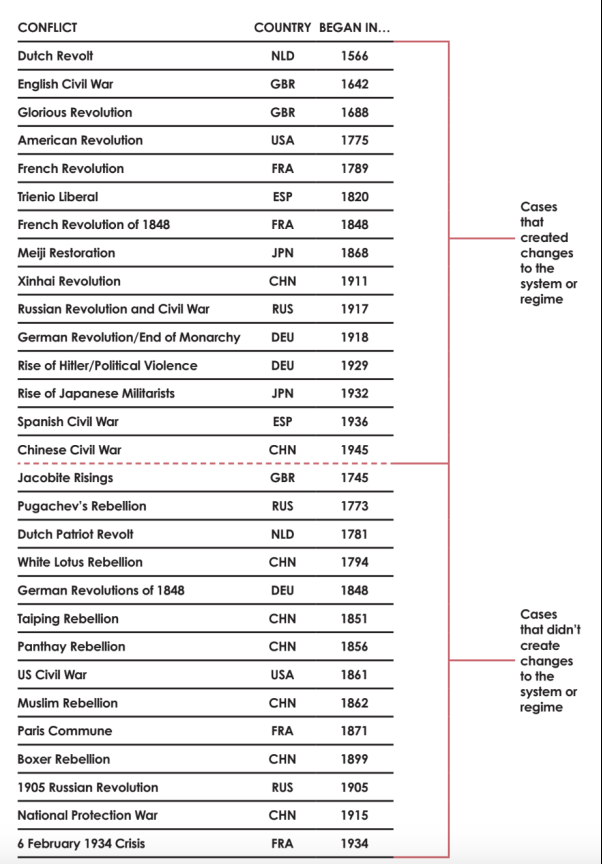
A classic example of a civil war breaking the system and having to build a new system is the Russian Revolution/Civil War of 1917. This put into place the communist internal order that eventually entered Stage 5 in the late 1980s, which led it to attempt to make revolutionary changes within the system—called perestroika (i.e., restructuring)—which failed and were followed by the collapse of the Soviet Union’s order in 1991. The communist domestic order lasted 74 years (from 1917 until 1991). That order was replaced by the new system/order that is now governing Russia, which, after the collapse of the old order, was built in the classic ways described earlier in this chapter in my explanations of Stages 1 and 2.
Another is Japan’s Meiji Restoration, which came about as a result of a three-year revolution (1866–69) that happened because the Japanese were closed off to the outside world and failed to advance. The Americans forced the Japanese to open, which prompted a revolutionary group to fight and defeat the rulers (led by the military shogun) in battle, which led to overturning the internal order then run by the four classes—the military, farmers, artisans, and merchants—that had ruled Japan. This old Japanese order run by traditional people was ultra-conservative (e.g., social mobility was outlawed) and was replaced by revolutionaries who were relatively progressive and changed everything by reinstating the powers of a modernizing emperor. Early in this period there were lots of labor disputes, strikes, and riots that resulted from the classic triggers of wealth gaps and bad economic conditions. In the reform process the leadership provided universal elementary education for both boys and girls, adopted capitalism, and opened the country up to the outside world. They did this with new technologies, which led them to become very competitive and gain wealth.
There are many such cases of countries that did the right things to produce revolutionarily beneficial improvements, just as there are many cases of revolutionaries doing the wrong things that inflicted terrible pain on their people for decades. By the way, as a result of its reformations Japan went on to move through the classic stages of the Big Cycle. It became extremely successful and rich. But over time it became decadent, overextended, and fragmented, had an economic depression, and fought expensive wars, all of which led to a classic demise. Its Meiji order and its classic Big Cycle lasted for 76 years from 1869 to 1945.
Civil wars and revolutions inevitably take place to radically change the internal order.
They include total restructurings of wealth and political power that include complete restructurings of debt and financial ownership and political decision making. These changes are the natural consequence of needing to make big changes that can’t be made within the existing system. Almost all systems encounter them. That is because almost all systems benefit some classes of people at the expense of other classes, which eventually becomes intolerable to the point that there is a fight to determine the path forward. When the gaps in wealth and values become very wide and bad economic conditions ensue so that the system is not working for a large percentage of the people, the people will fight to change the system. Those who are suffering the most economically will fight to get more wealth and power from those who have wealth and power and who benefit from the existing system. Naturally the revolutionaries want to radically change the system, so naturally they are willing to break the laws that those in power demand they adhere to. These revolutionary changes typically happen violently through civil wars, though as previously described, they can come about peacefully without toppling the system.
The periods of civil war are typically very brutal. Typically, early on these wars are forceful and orderly struggles for power, and as the fighting and emotions intensify and the sides do anything to win, the levels of brutality accelerate unexpectedly such that the actual levels of brutality that occur in the Stage 6 civil wars and revolutions would have been considered implausible in Stage 5. The elites and moderates generally flee, are imprisoned, or are killed. Reading the stories of civil wars and revolutions, such as the Spanish Civil War, the Chinese Civil War, the Russian Revolution, and the French Revolution, made my hair curl.
How do they transpire? Earlier I described the dynamics of Stage 5 that led to crossing the line into Stage 6. During this stage all of those intensify greatly. I will explain.
How Civil Wars and Revolutions Transpire
As previously described, the cycle of building wealth and wealth gaps that leads to a very small percentage of the population controlling an exceptionally large percentage of the wealth eventually results in the poor majority overthrowing the rich minority via civil wars and revolutions. This has happened more times than one can imagine.
While most of the archetypical civil wars and revolutions shifted power from the right to the left, many shifted wealth and power to the right and away from those on the left. However, there were fewer of them and they were different. They typically happened when the existing orders slipped into dysfunctional anarchies and a large percentage of the population yearned for strong leadership, discipline, and productivity. Examples of revolutions from the left to the right include Germany, Spain, Japan, and Italy in the 1930s; the fall of the Soviet Union in the 1980s to the early 1990s; the 1976 coup in Argentina replacing Isabel Perón with a military junta; and the coup leading to the Second French Empire in 1851. All those that I examined worked or didn’t work for the same reason. Like those of the left, these new internal orders succeeded when they produced broad-based economic successes and failed when they did not. Because broad economic prosperity is the biggest reason a new regime succeeds or fails, the long-term trends have been to both greater total wealth and broader distribution of the wealth (i.e., better economic and health outcomes for the average person). That big picture can be easily lost when one is in and experiencing one part of the Big Cycle.
Typically, the people who led the civil war/revolution were (and still are) well-educated people from middle-class backgrounds. For example, three of the key revolutionary leaders of the French Revolution were Georges-Jacques Danton, a lawyer raised in a bourgeois family; Jean-Paul Marat, a physician, scientist, and journalist raised in a bourgeois family; and Maximilian Robespierre, a lawyer and statesman also from a bourgeois family. This revolution was initially supported by many liberal aristocrats, like the Marquis de Lafayette, who were raised in moderately well-off families. Similarly, the leaders of the Russian Revolution were Vladimir Lenin, who studied law, and Leon Trotsky, who was raised in a bourgeois family of intellectuals. The Chinese Civil War was led by Mao, who was from a moderately well-off family and studied a variety of subjects such as law, economics, and political theory, and Zhou Enlai, who was from a scholarly middle-class family of civil servants. These leaders also typically were (and still are) charismatic and able to lead and work well with others to build big, well-run organizations that have the power to bring about the revolutions. If you want to look for the revolutionaries of the future, you might keep an eye on those who have these qualities. Over time they typically evolve from being idealistic intellectuals wanting to change the system to be fairer to brutal revolutionaries bent on winning at all costs.
While having large wealth gaps during economically difficult times was typically the biggest source of conflict, there were always other reasons for conflict that added up to a lot of opposition to the leadership and the system. Typically, in revolutions the revolutionaries with these different grievances joined together to make revolutionary changes; while they looked united during the revolution, after winning the revolution, they typically fought with each other over issues and for power.
As previously mentioned, during the civil war/revolution stage of the cycle the governments in power almost always had an acute shortage of money, credit, and buying power. That shortage created the desire to grab money from those who had it, which led those who had wealth to move it into places and assets that were safe, which led the governments to stop these movements by imposing capital controls—i.e., controls on movements to other jurisdictions (e.g., other countries), to other currencies, or to assets that are more difficult to tax and/or are less productive (e.g., gold).
To make matters even worse, when there was internal disorder, foreign enemies were more likely to challenge the country. This happens because domestic conflict causes vulnerabilities that make external wars more likely. Internal conflict splits the people within a country, is financially taxing on them, and demands attention that leaves less time for the leaders to tend to other issues—all things that create vulnerabilities for foreign powers to take advantage of. That is the main reason why internal wars and external wars tend to come close together. Other reasons include: emotions and tempers are heightened; strong populist leaders who tend to come to power at such times are fighters by nature; when there are internal conflicts leaders find that a perceived threat from an external enemy can bring the country together in support of the leader so they tend to encourage the conflict; and being deprived leads people/countries to be more willing to fight for what they need, including resources that other countries have.
Almost all civil wars have had some foreign powers participating in an attempt to influence the outcome to their benefit.
The beginnings of civil wars and revolutions aren’t clear when they are happening, though they are obvious when one is deeply in the middle of them.
While historians assign dates to the beginnings and ends of civil wars, they are arbitrary. The truth is that almost no one at the time knows that a civil war has begun or that it has ended, but they know when they are in them. For example, many historians have designated July 14, 1789, as the day the French Revolution began because a mob stormed an armory and prison called the Bastille. But nobody at the time thought it was the beginning of the French Revolution or had any idea how terribly brutal that civil war and revolution would become. While one might not know what’s to come, one can have imprecise markers that help one place where one is, to see the direction that one is moving in, and to know something about what the next stage will be like.
Civil wars are incredibly brutal because they are fights to the death. Everyone is an extremist because everyone is forced to pick a side and fight—also moderates lose out in knife fights.
As for what types of leaders are best for civil wars and revolutions, they are the “inspirational generals”—people who are strong enough to marshal support and win the various types of battles they have to win. Because the fight is brutal, they have to be brutal enough to do whatever is necessary to win.
The time that historians stamp as the civil war period typically lasts a few years and determines the official winners and losers, which is conveyed by who gets to occupy the government buildings in the capital. But like the beginnings, the ends of civil wars/revolutions are not as clearly defined as historians convey. The fighting to consolidate power can go on for a long time after the official civil war has ended.
While civil wars and revolutions are typically extremely painful, they often lead to restructurings that, if done well, can establish the foundation for improved future results. What the future after the civil war/revolution looks like depends on how the next steps are handled.
Conclusion
My study of history has taught me that nothing is forever other than evolution, and within evolution there are cycles that are like tides that come in and go out and that are hard to change or fight against. To handle these changes well it is essential to know which stage of the cycle one is in and to know timeless and universal principles for dealing with it. As conditions change the best approaches change—i.e., what is best depends on the circumstances and the circumstances are always changing in the ways we just looked at. For that reason, it is a mistake to rigidly believe that any economic or political system is always best because there will certainly be times when that system is not best for the circumstances at hand, and if a society doesn’t adapt it will die. That is why constantly reforming systems to adapt well is best. The test of any system is simply how well it works in delivering what most of the people want, and this can be objectively measured, which we can do and will continue to do. Having said that, the lesson from history that comes through most loudly and most clearly is that skilled collaborations to produce productive win-win relationships to both grow and divide the pie well, so that most people are happy, are much more rewarding and much less painful than fighting civil wars over wealth and power that lead to one side subjugating the other side.


